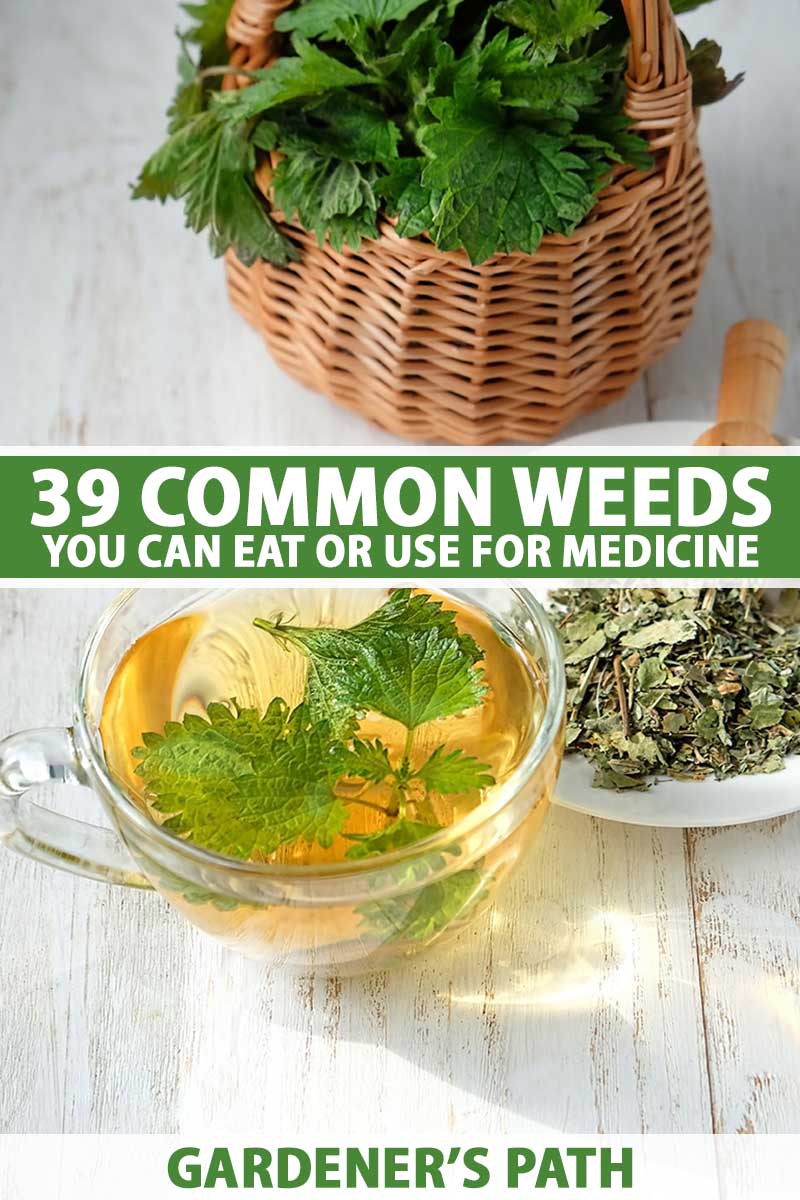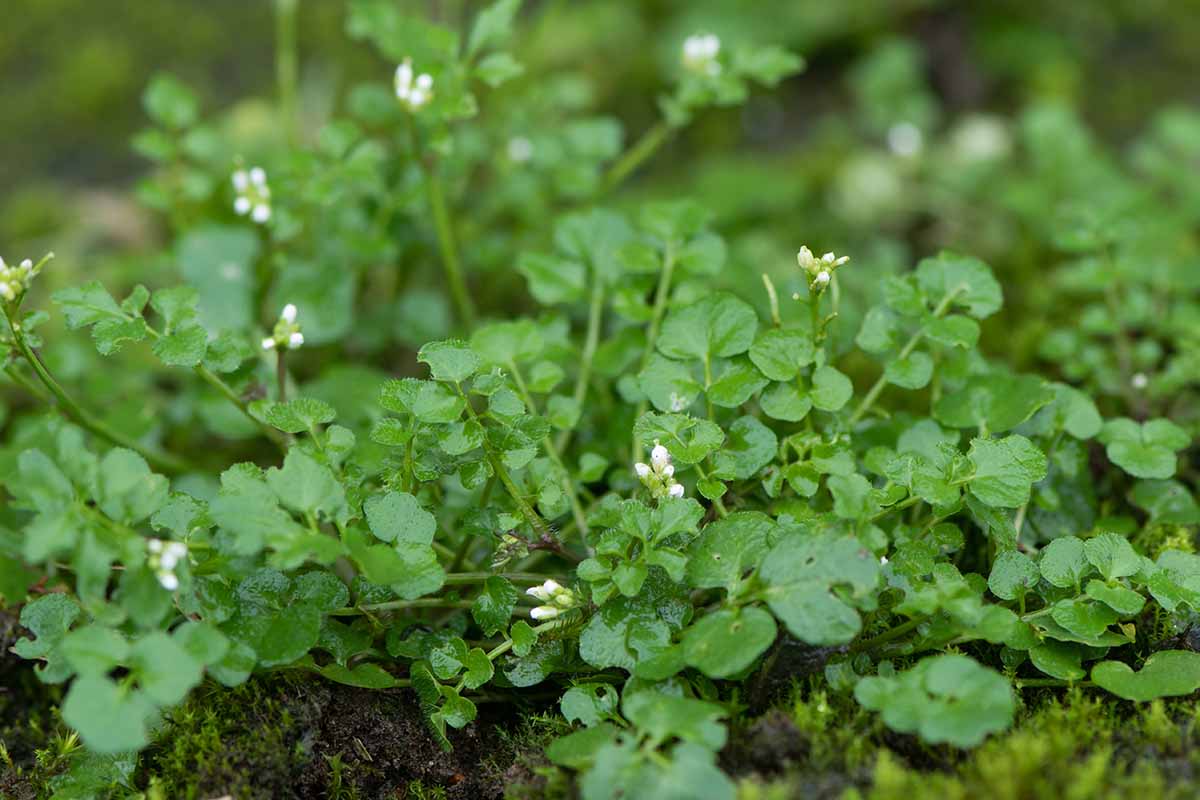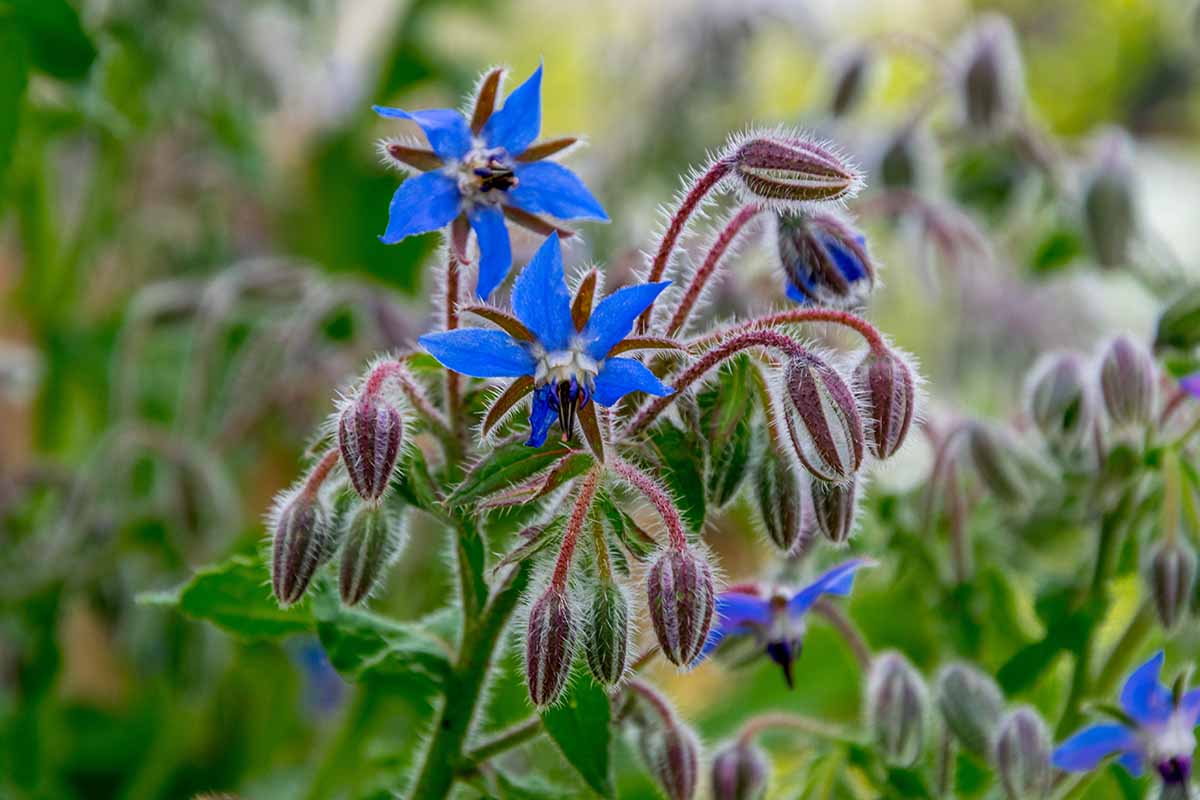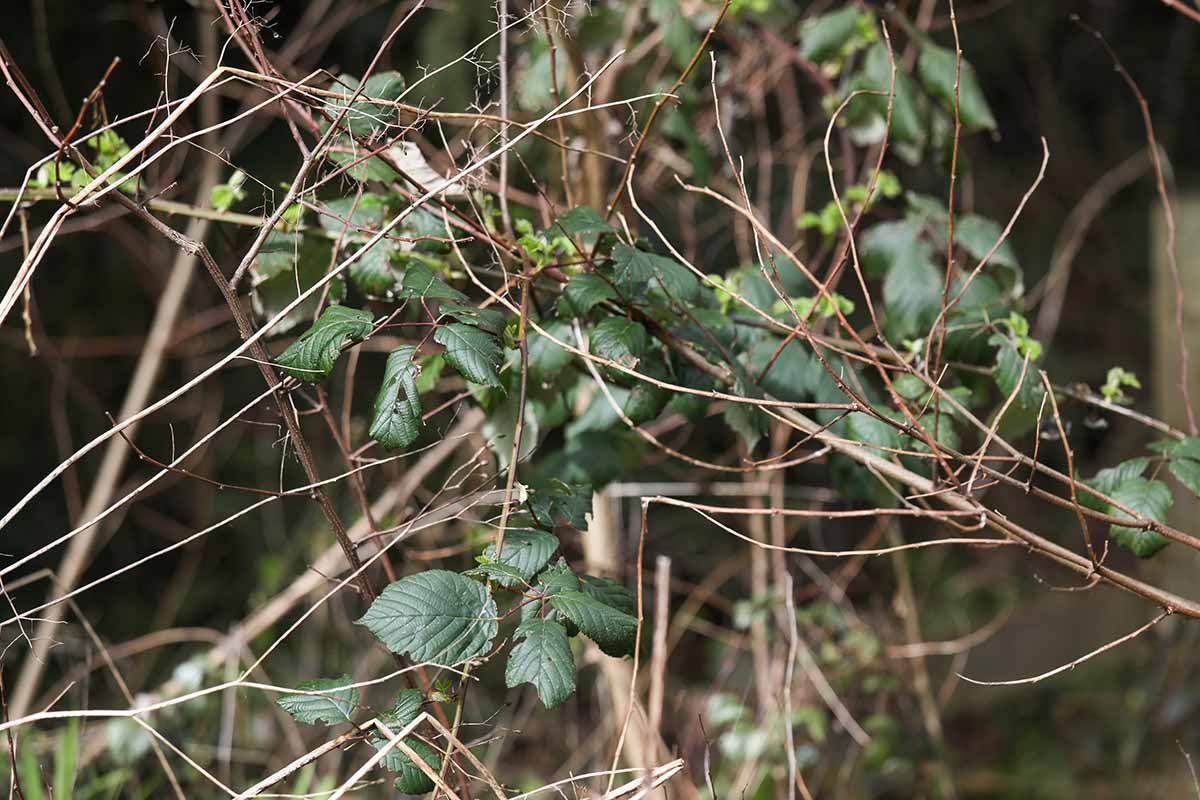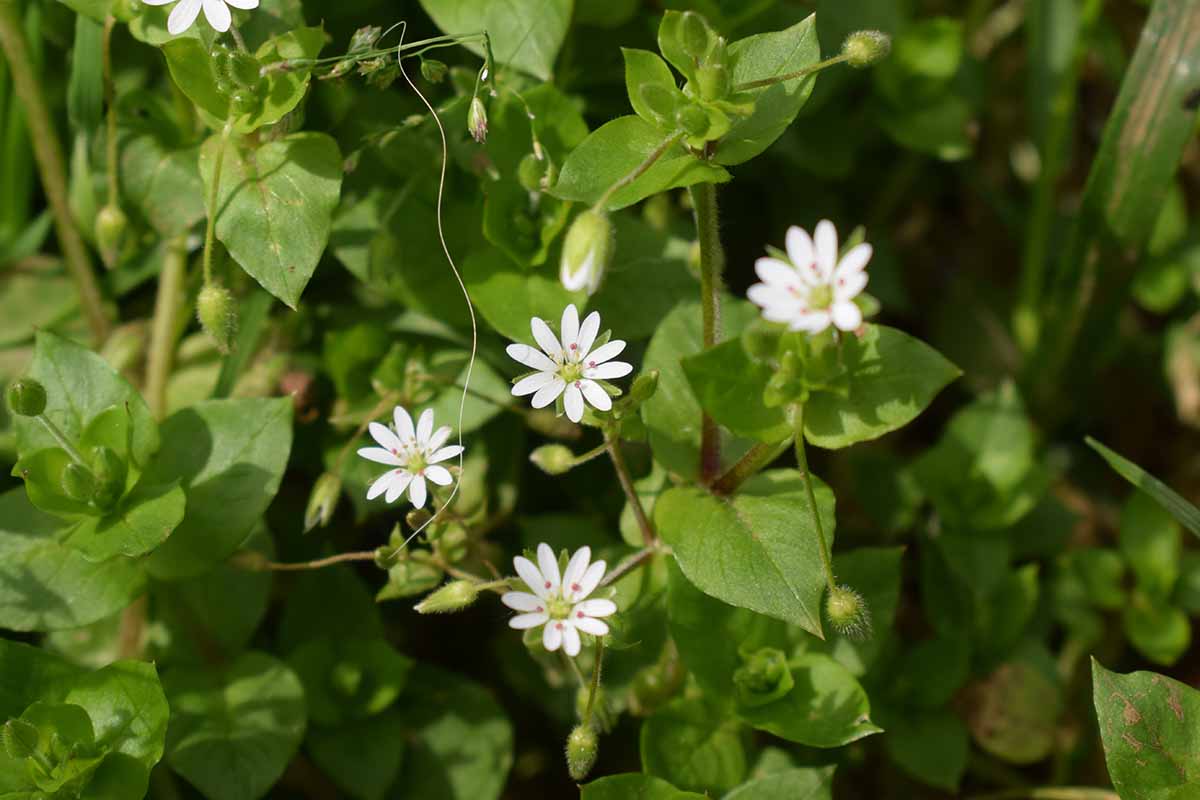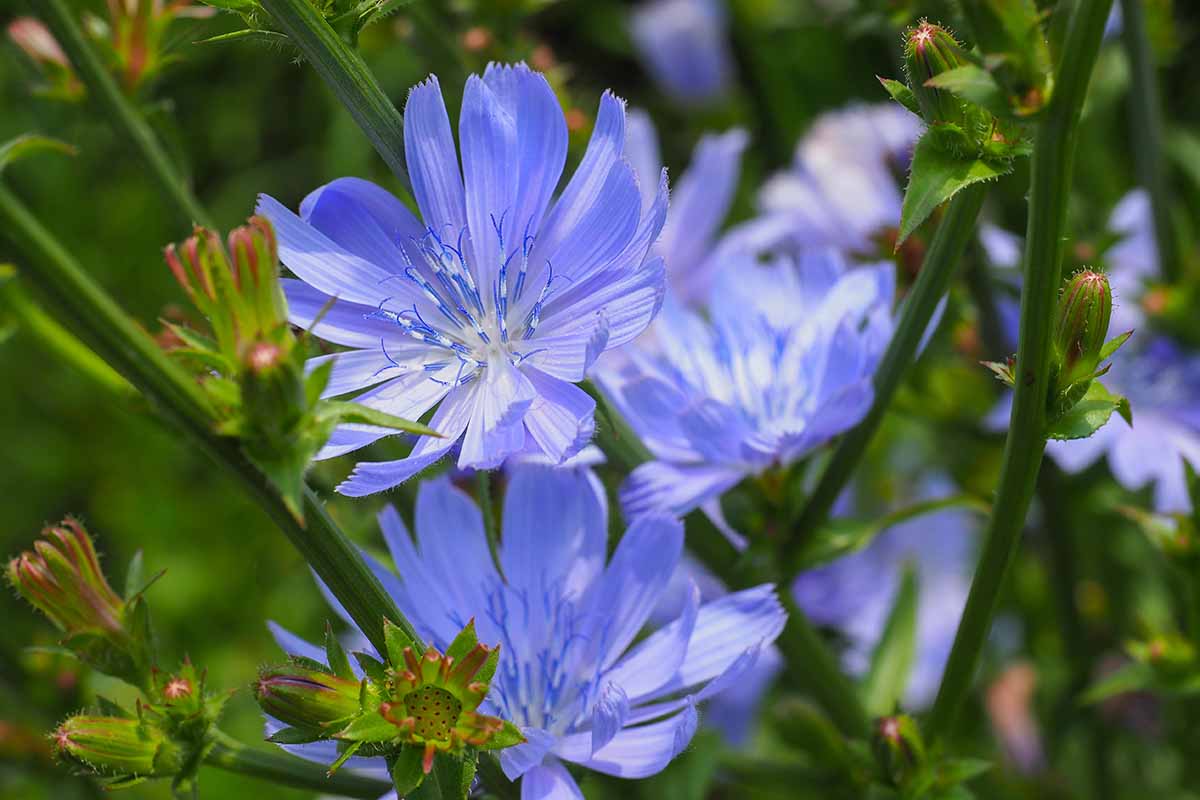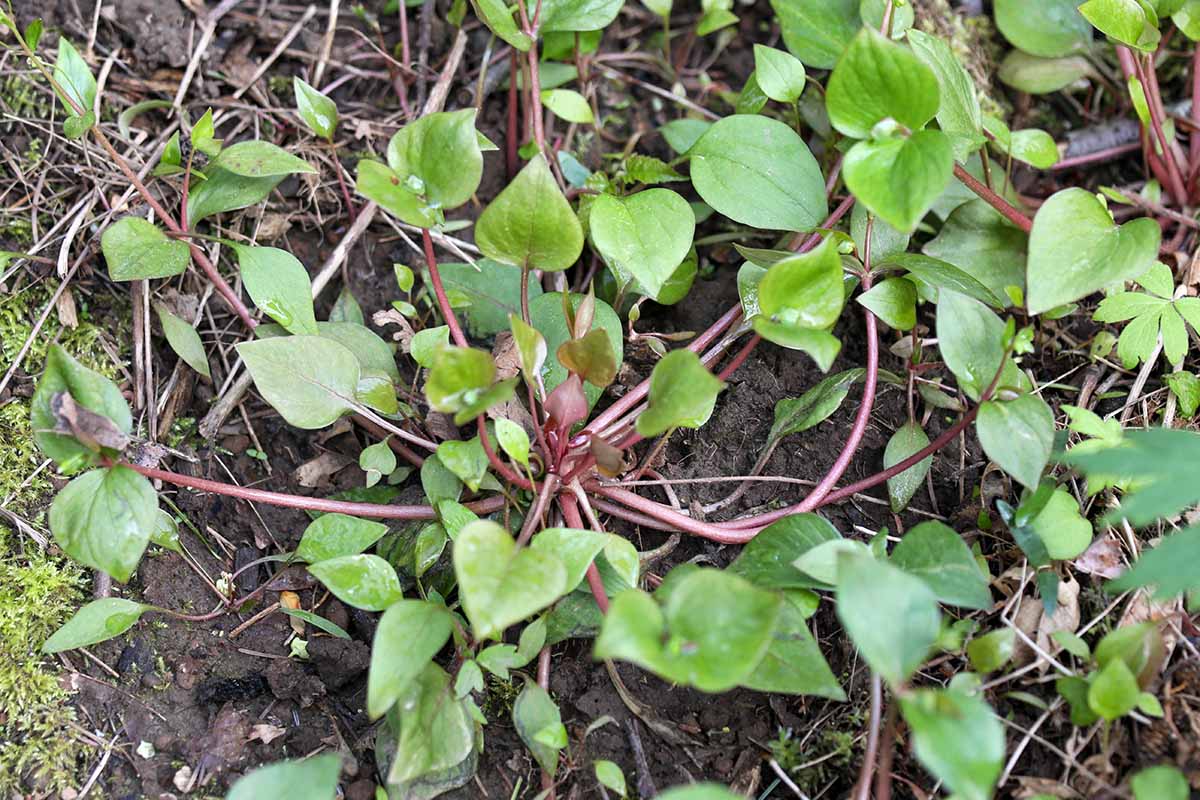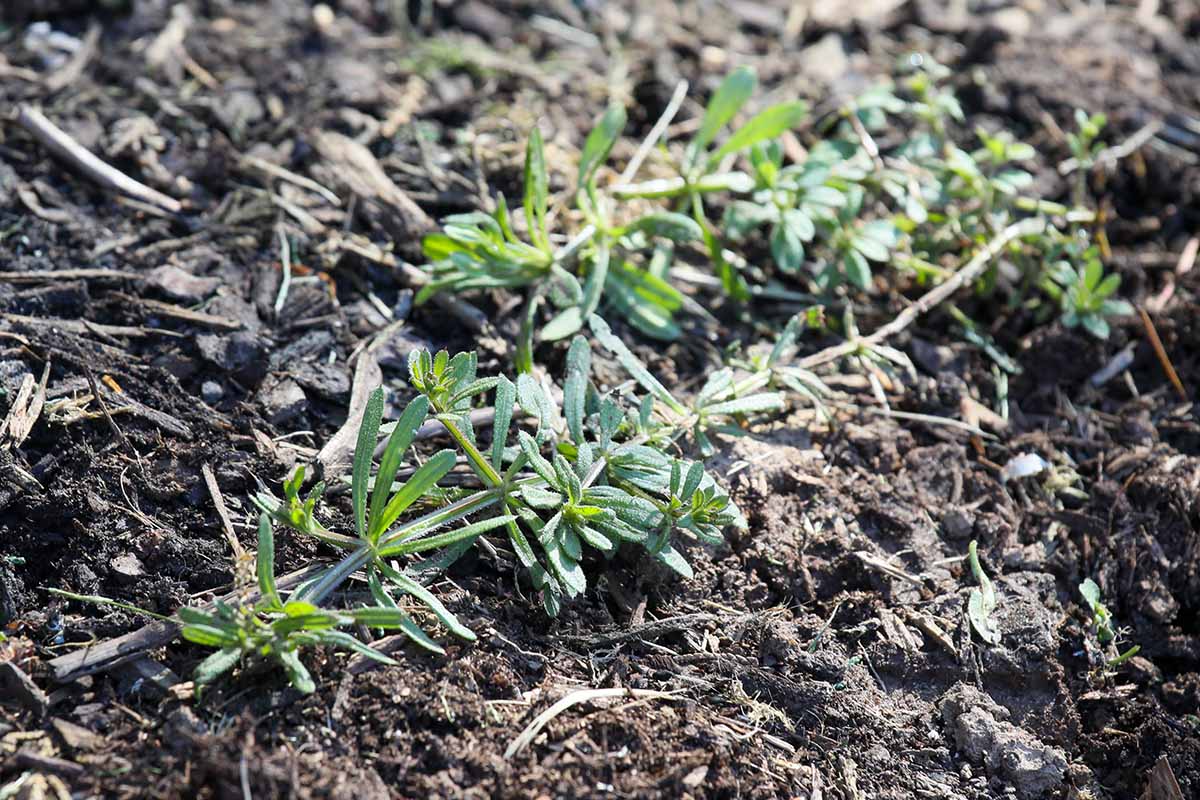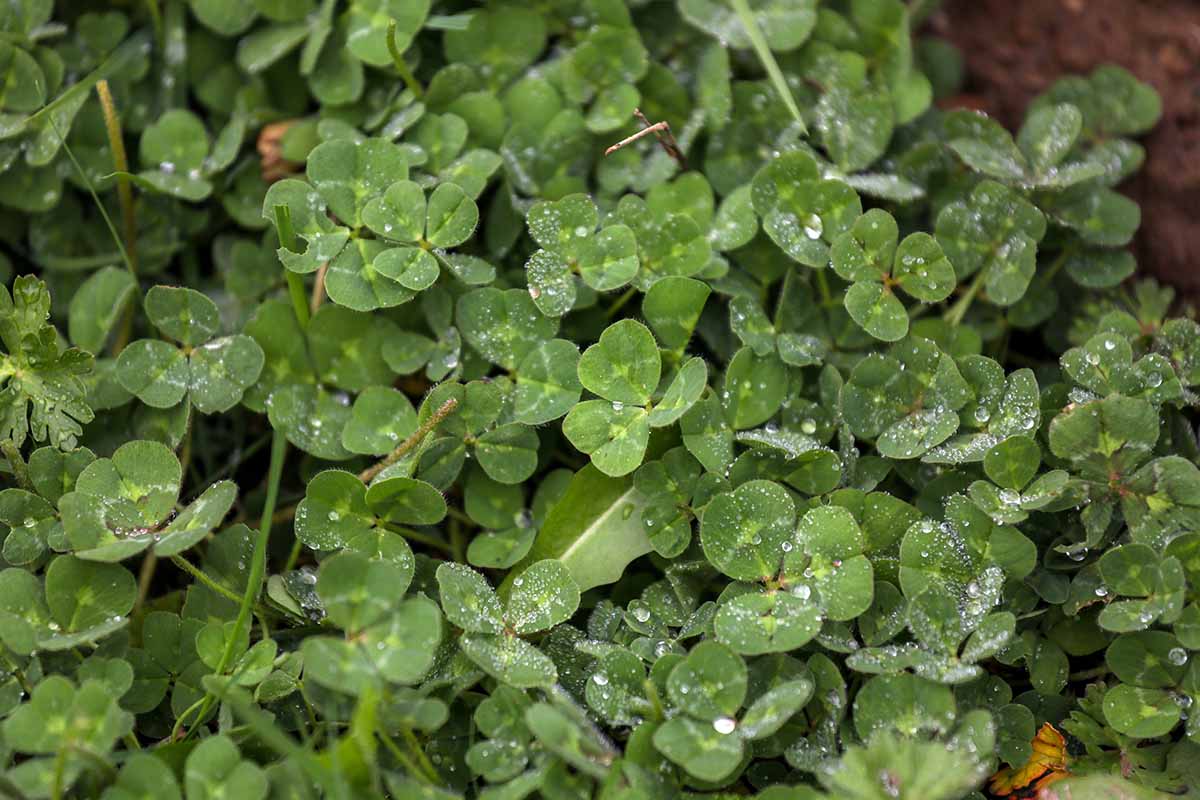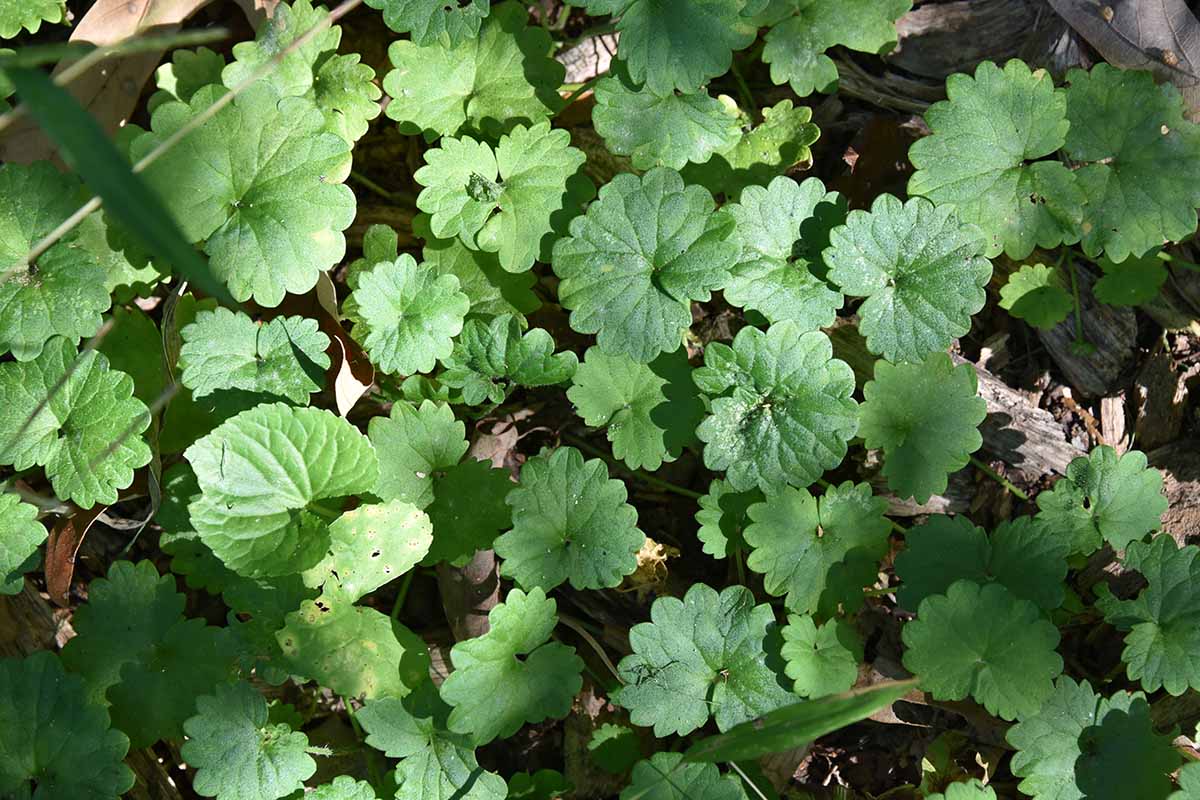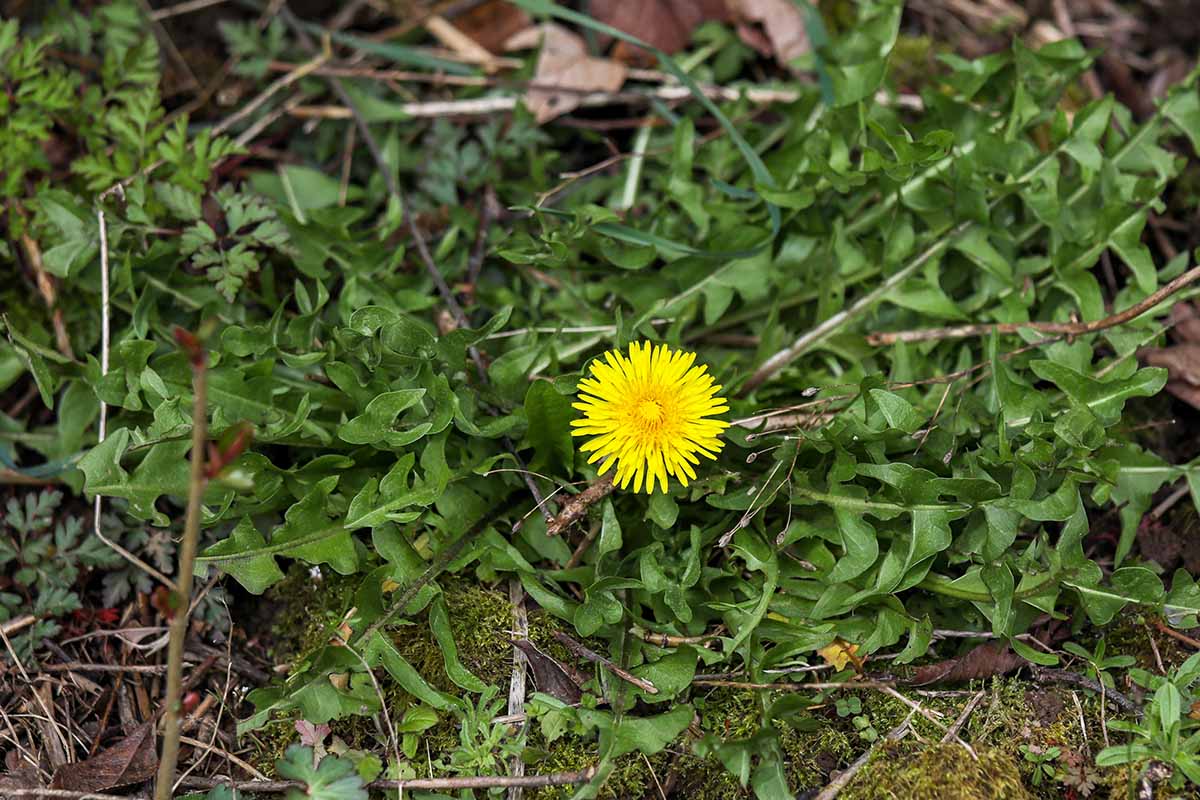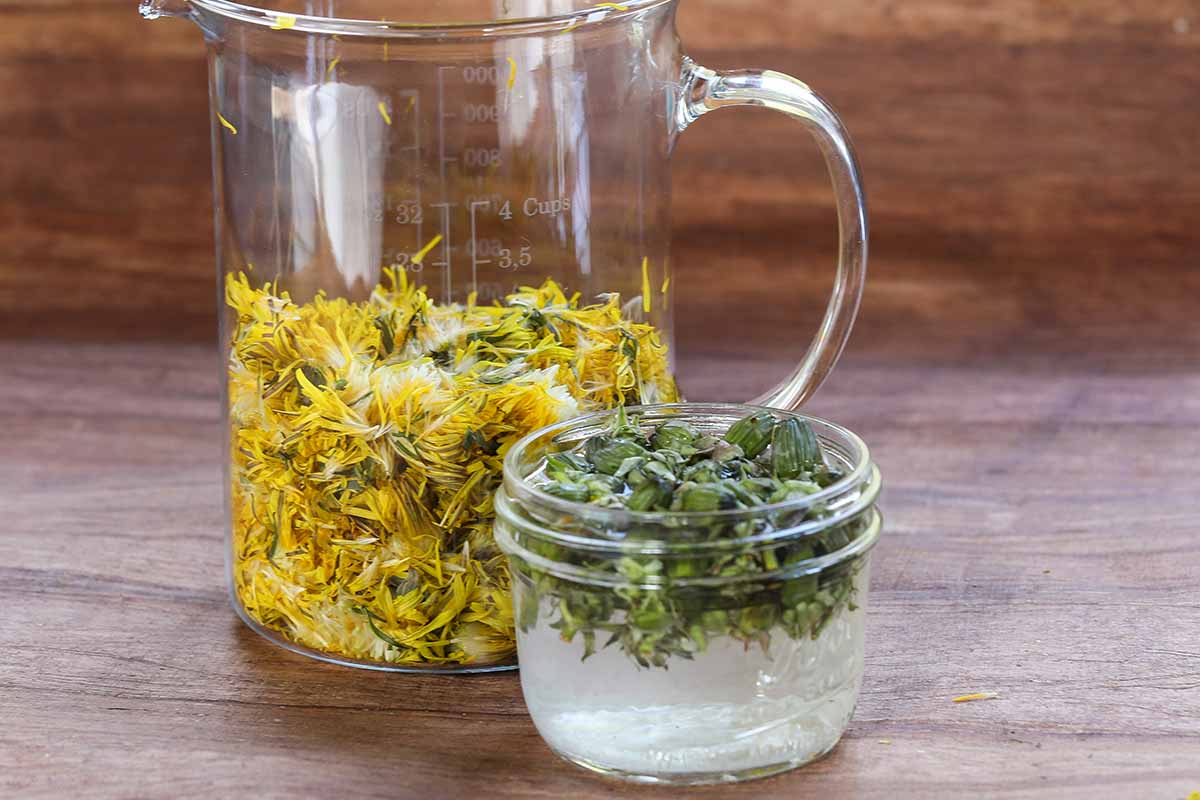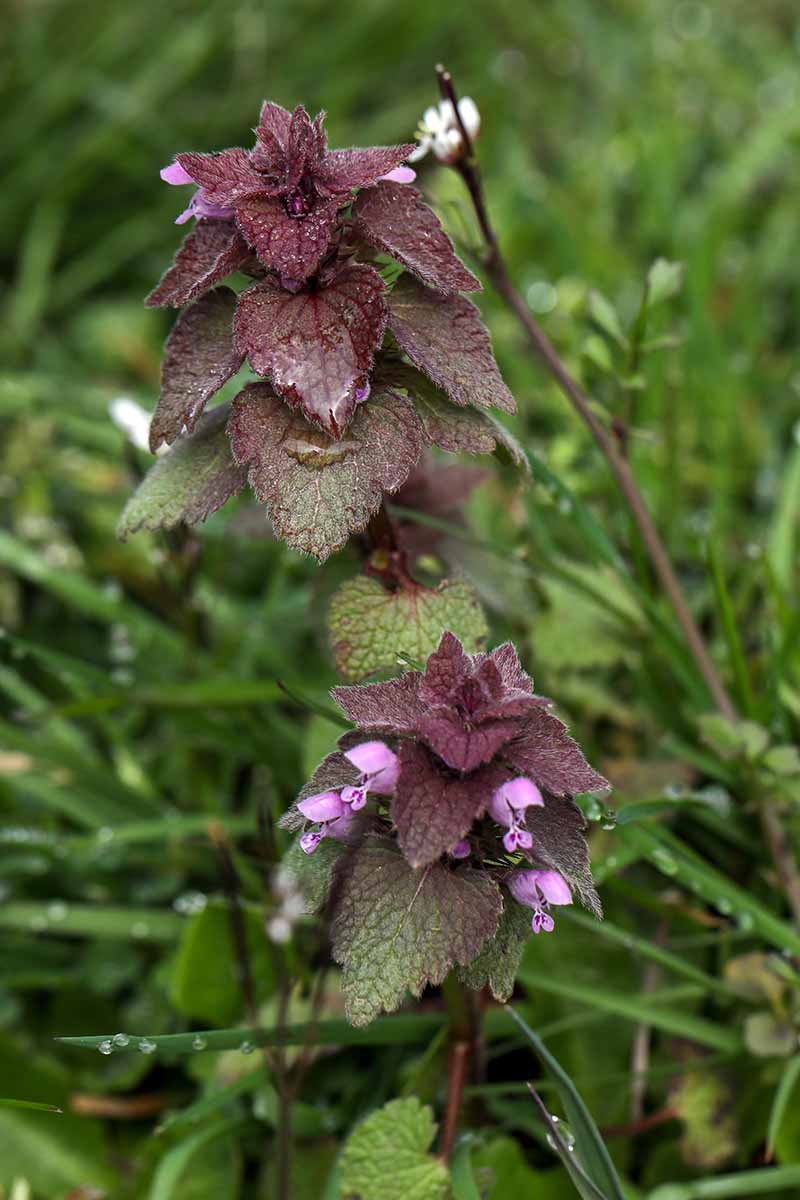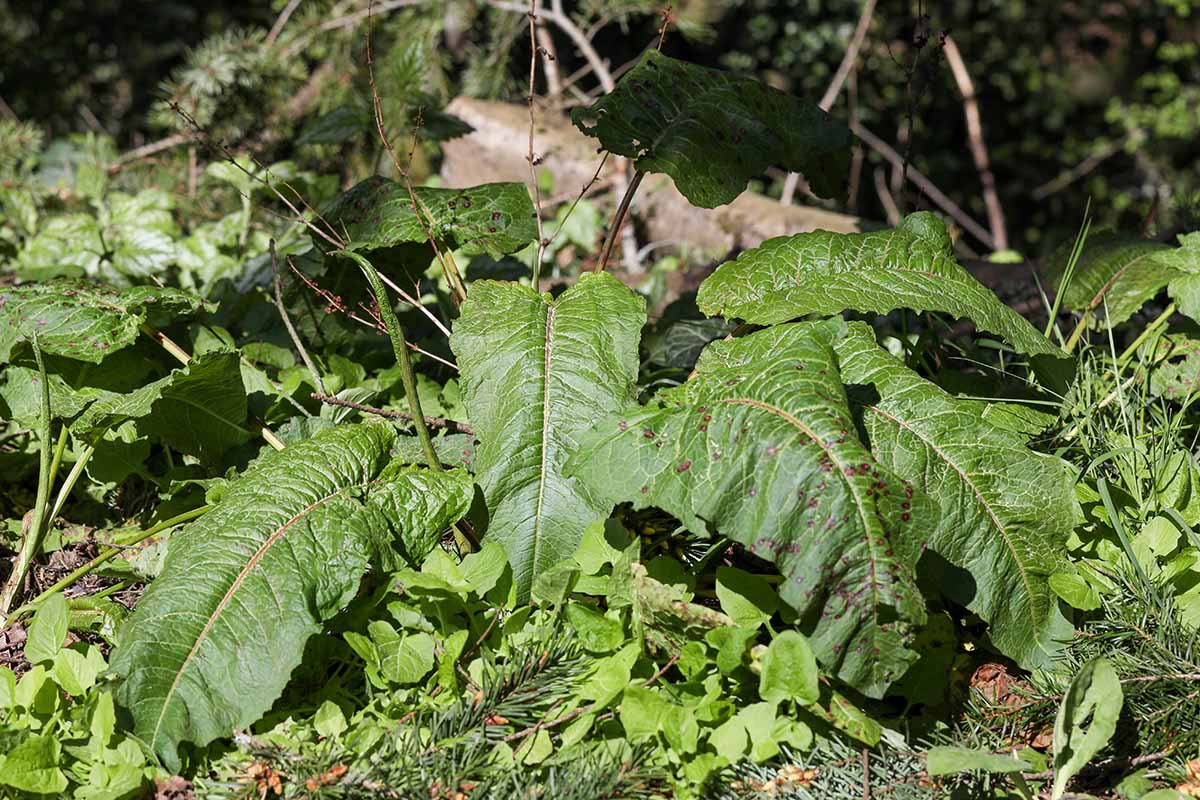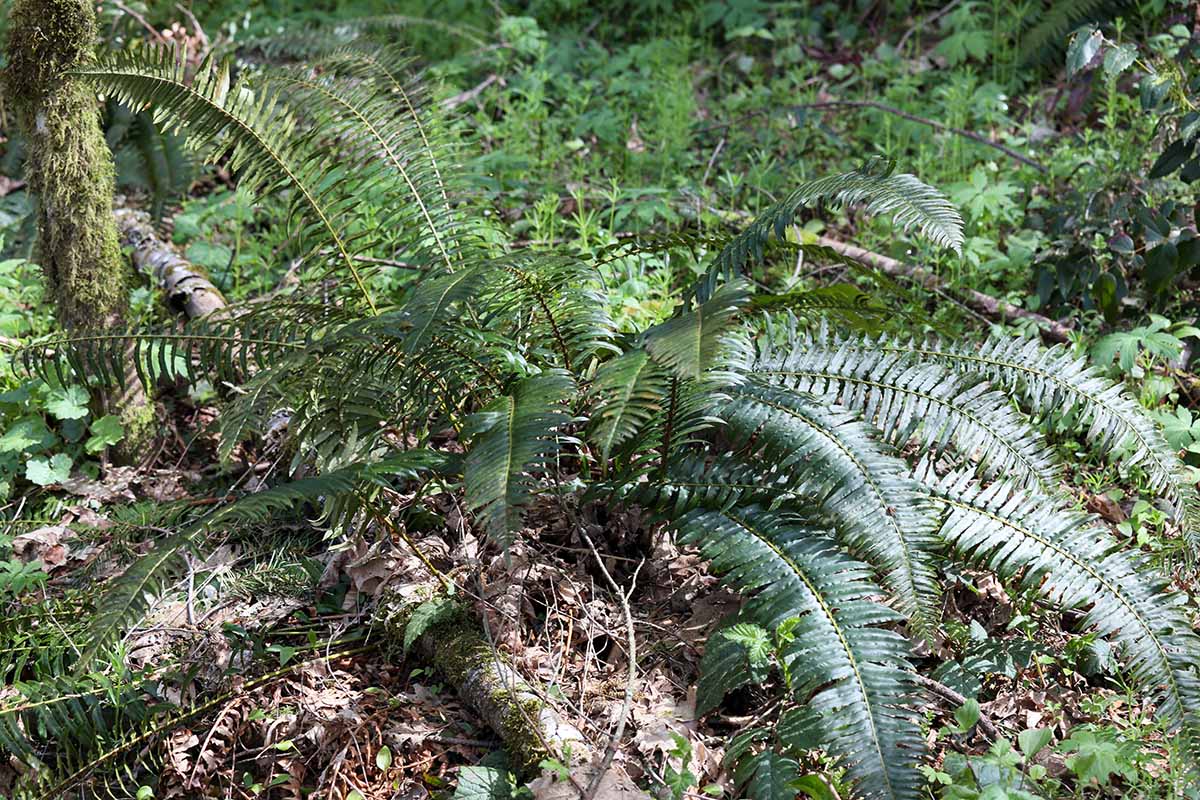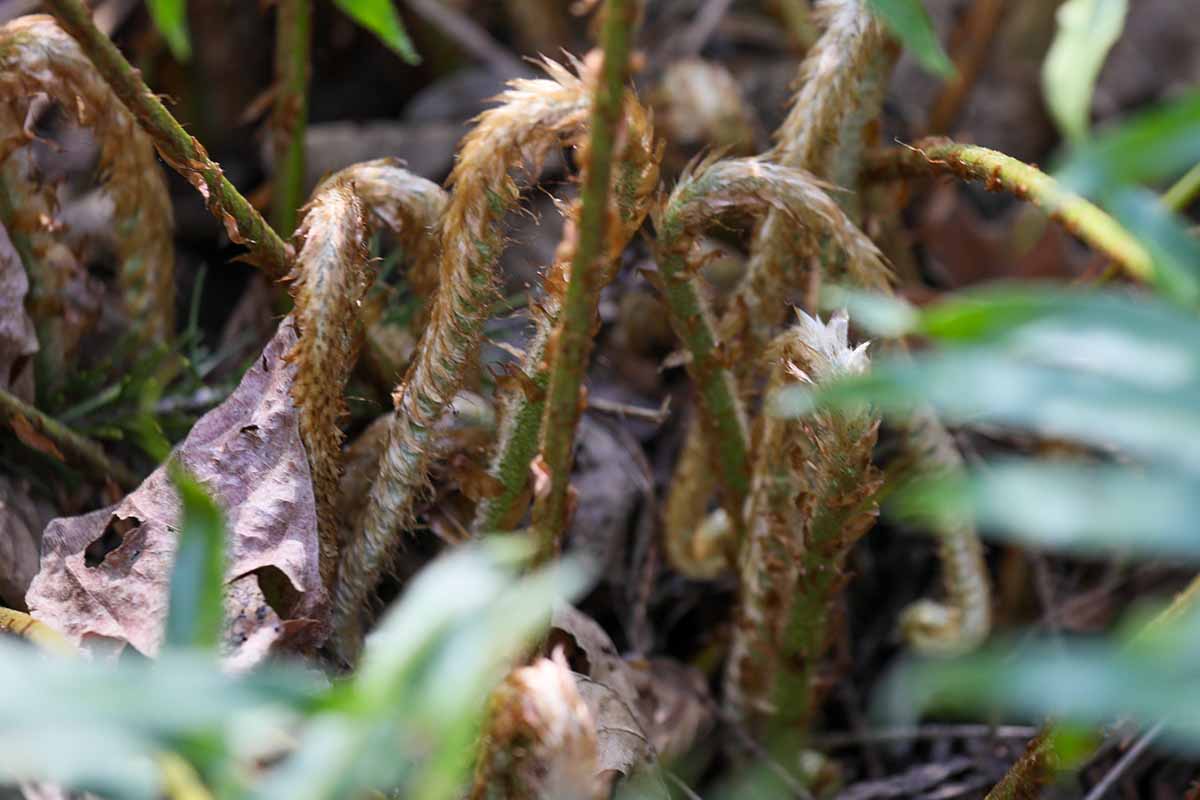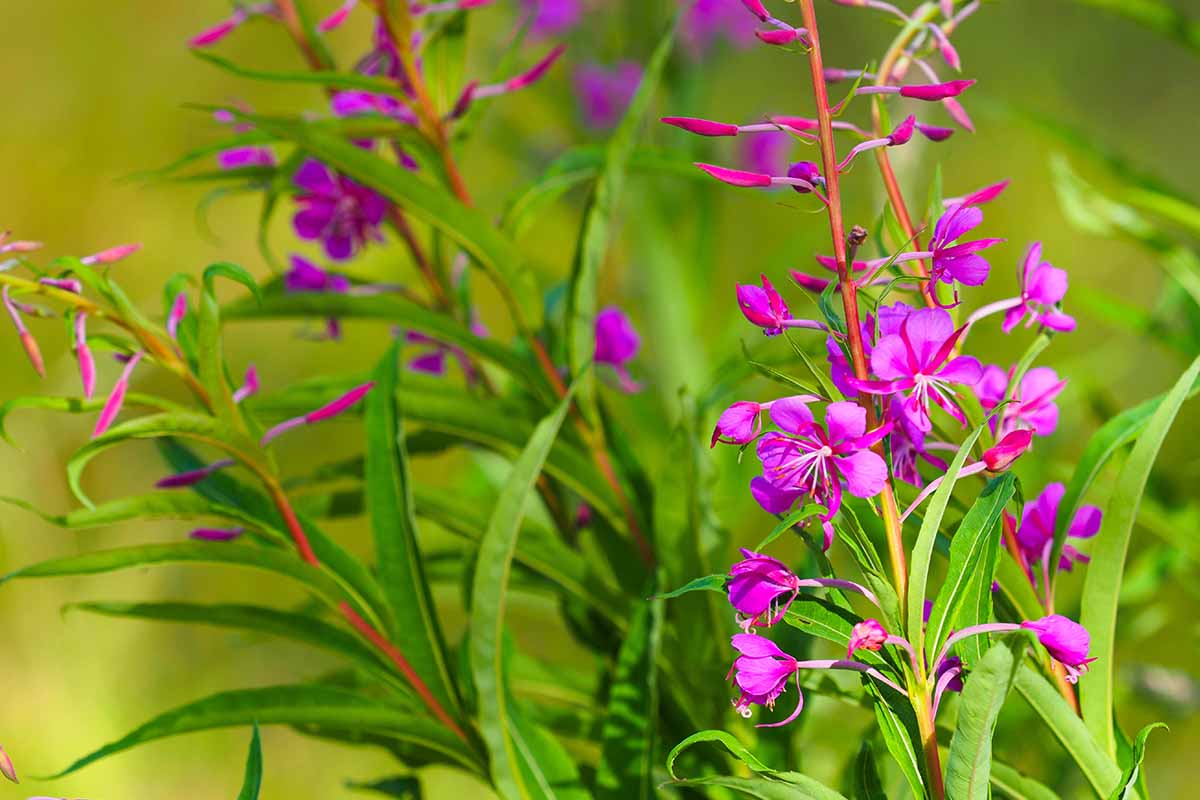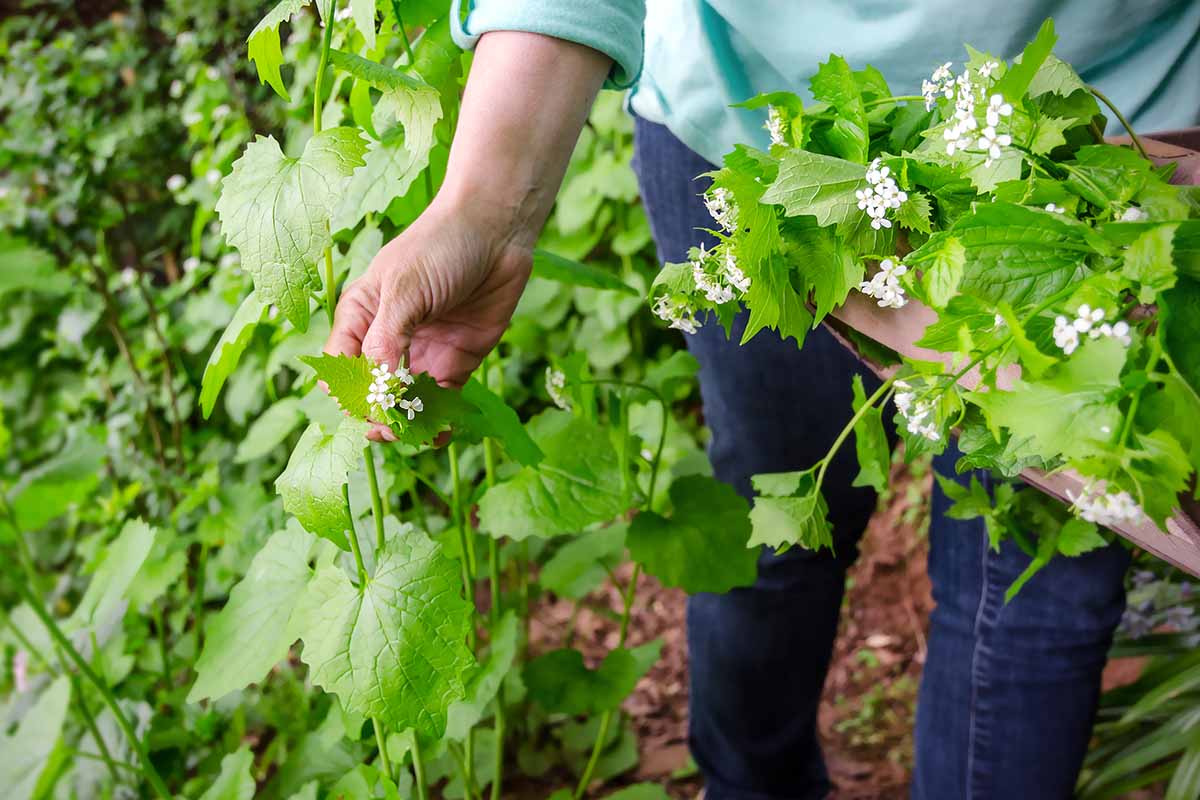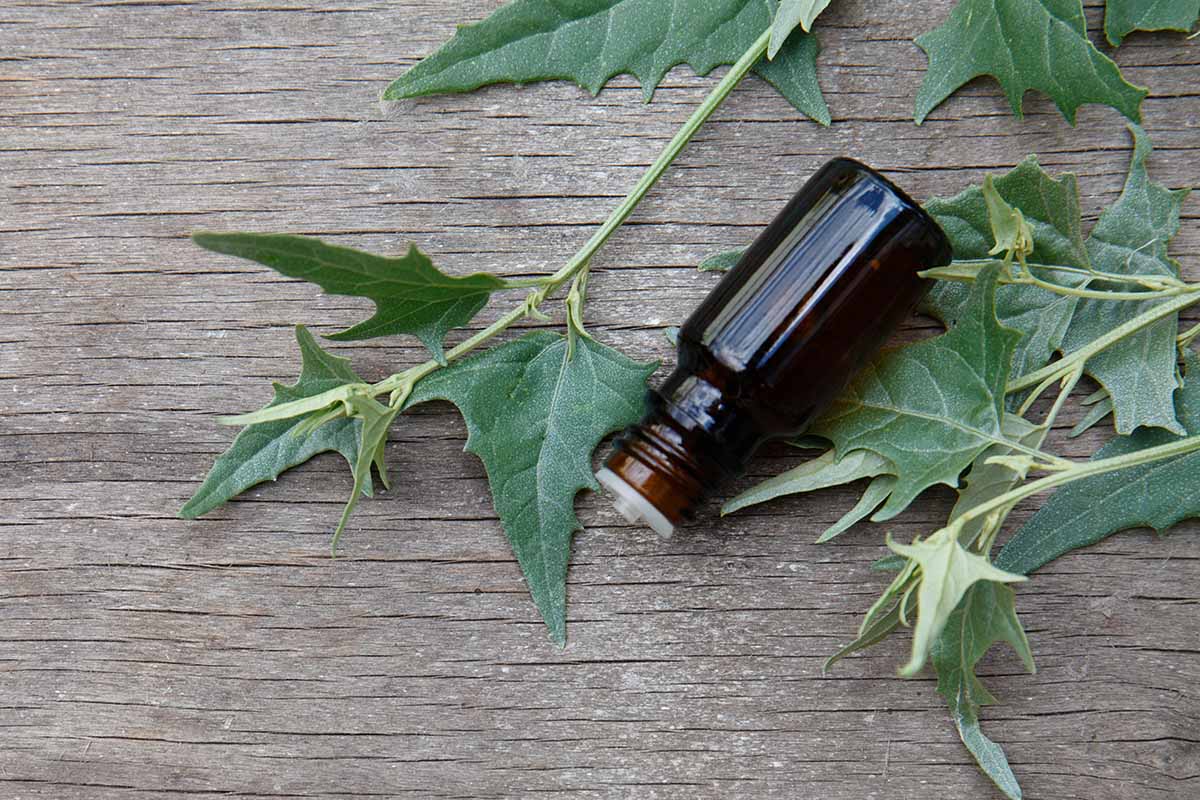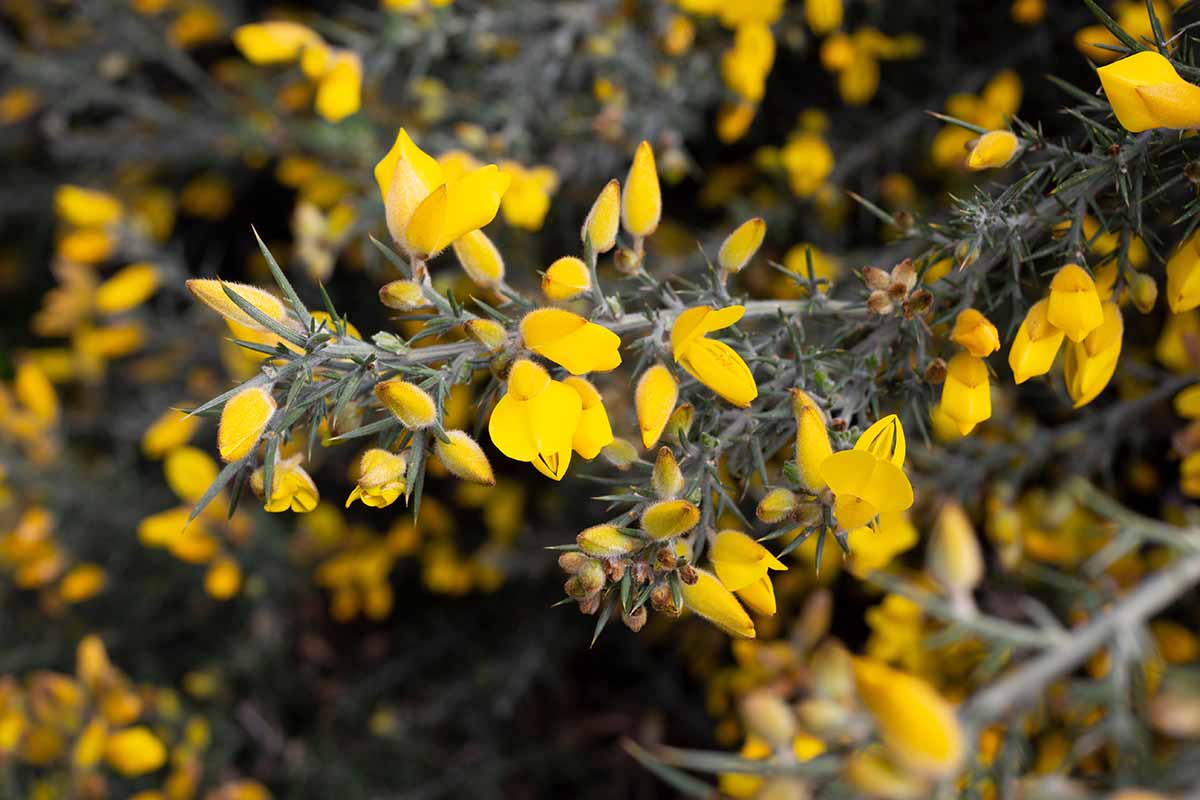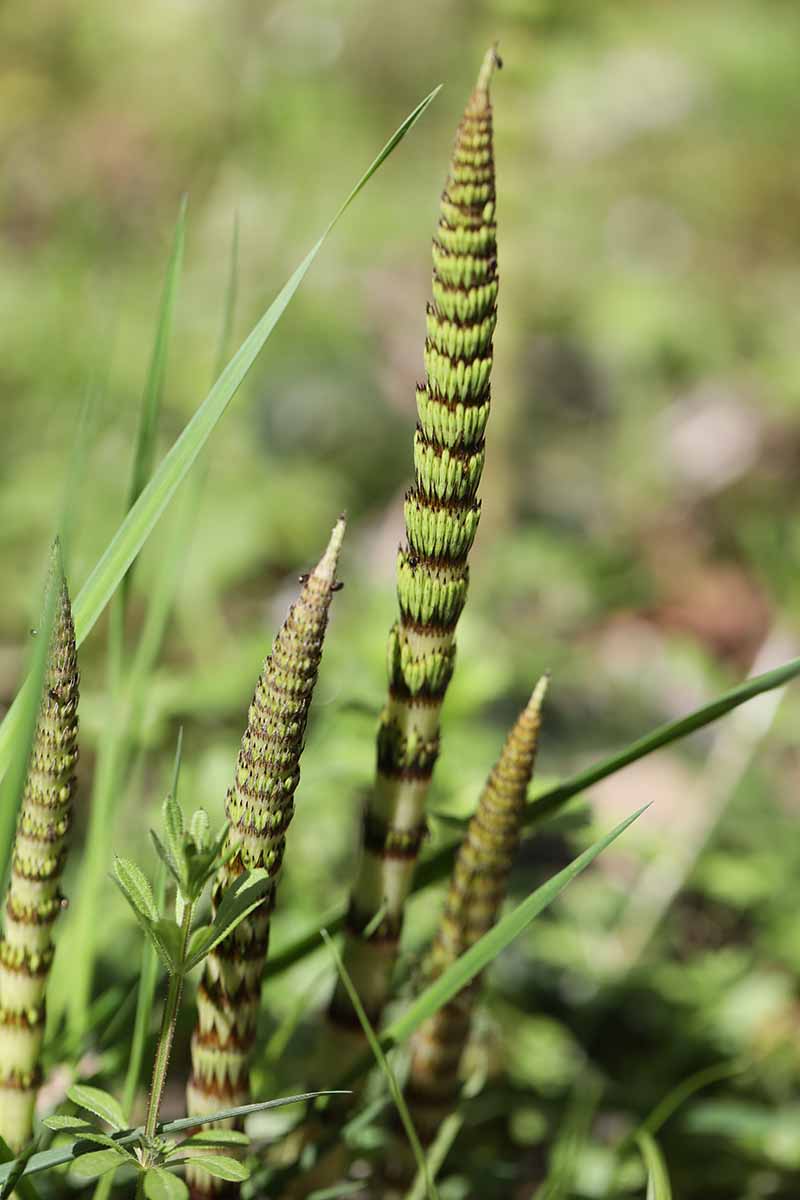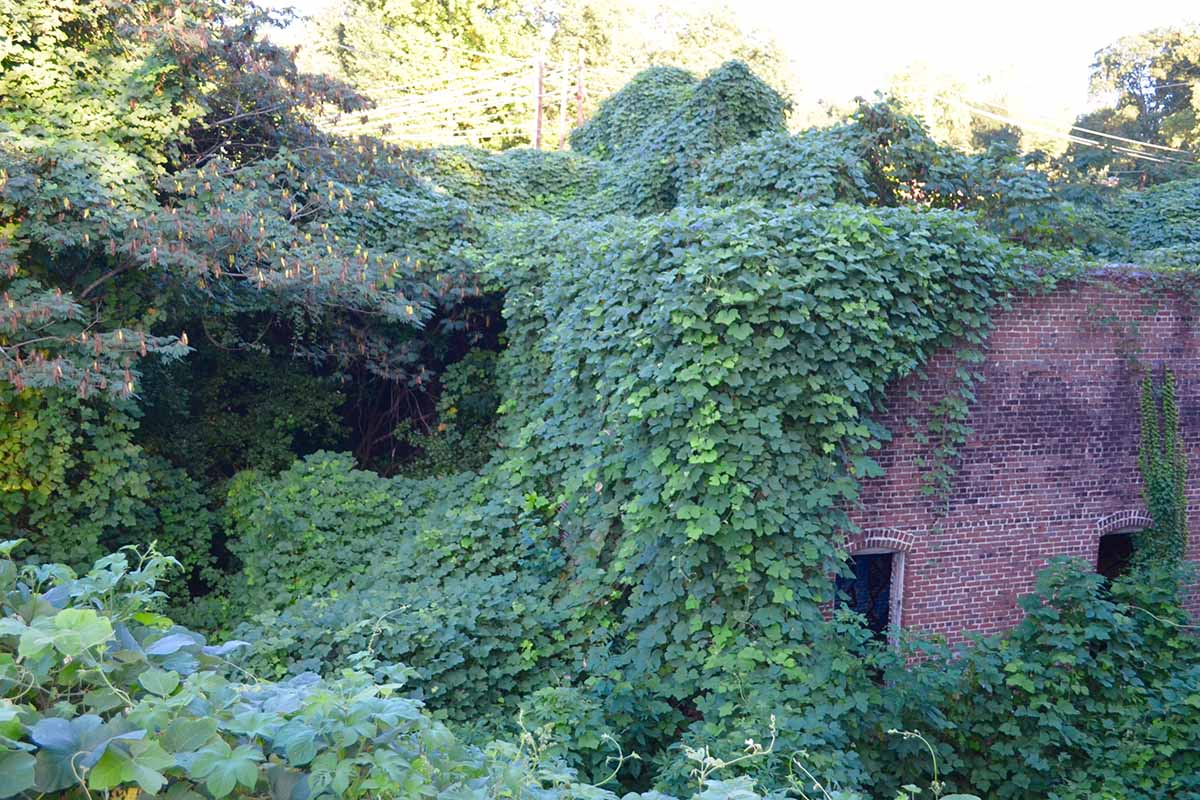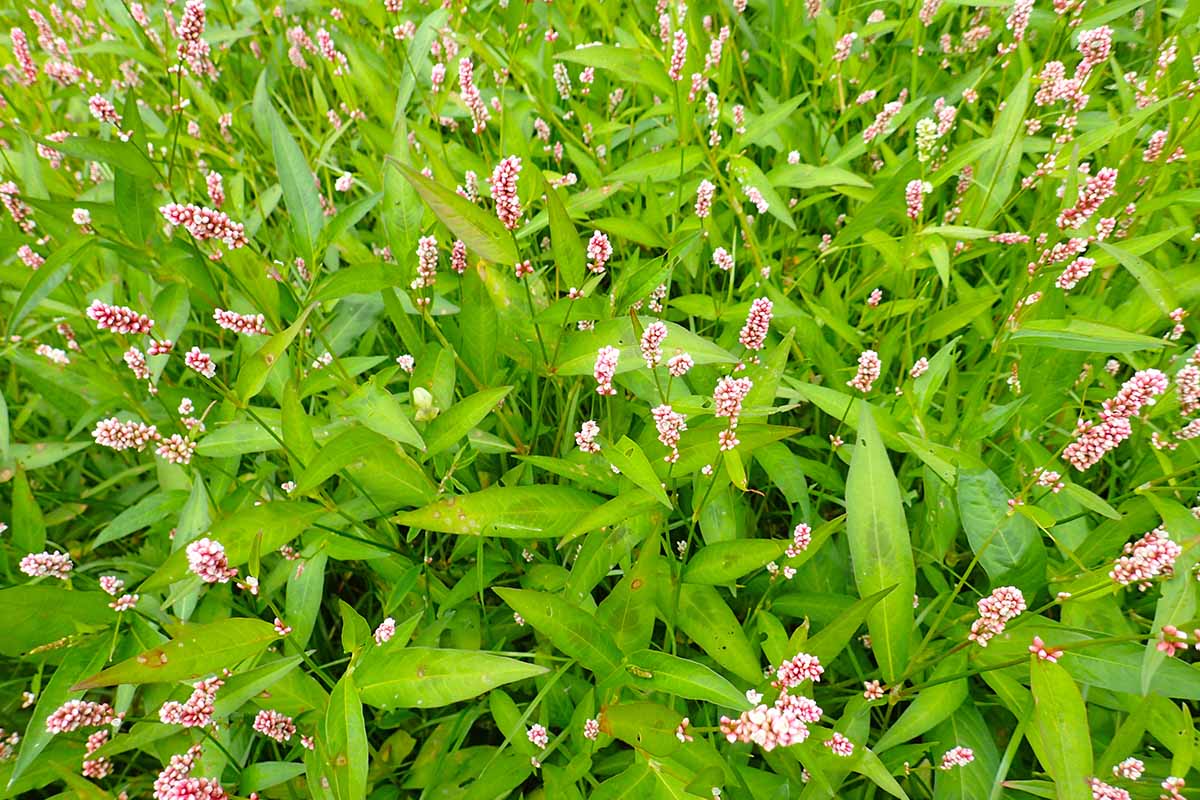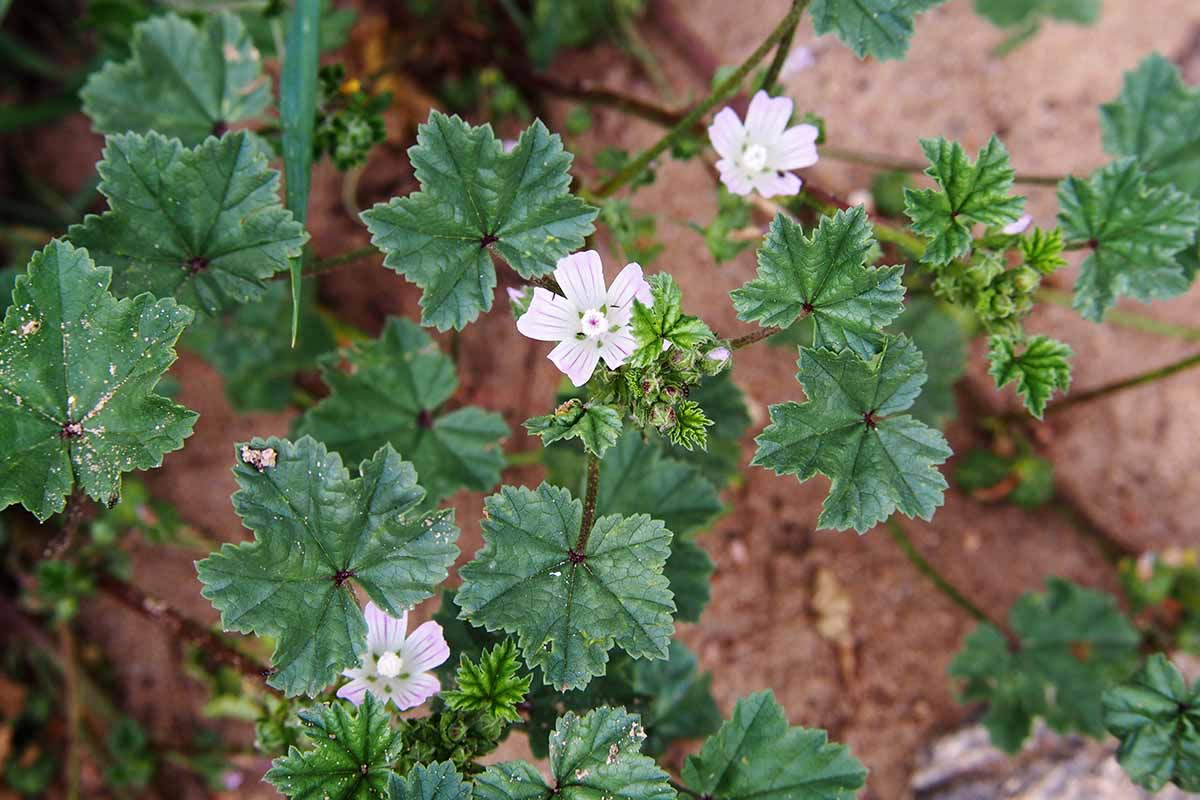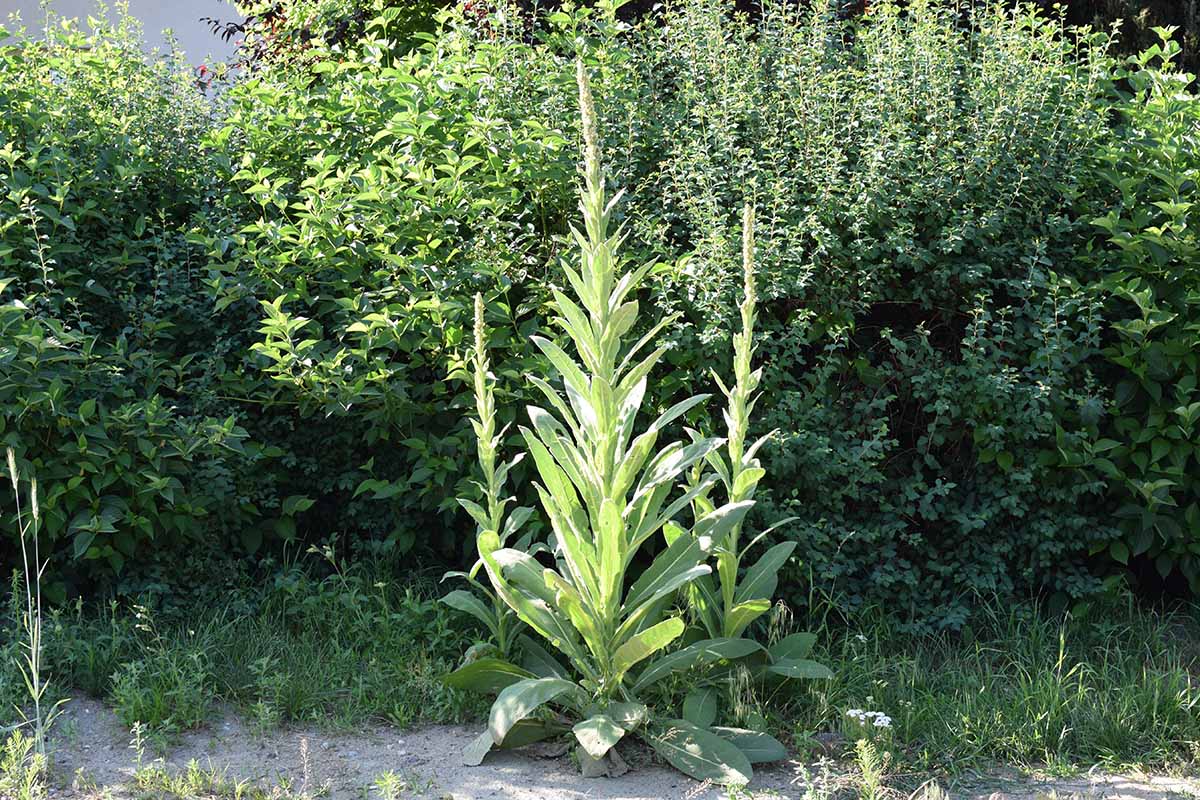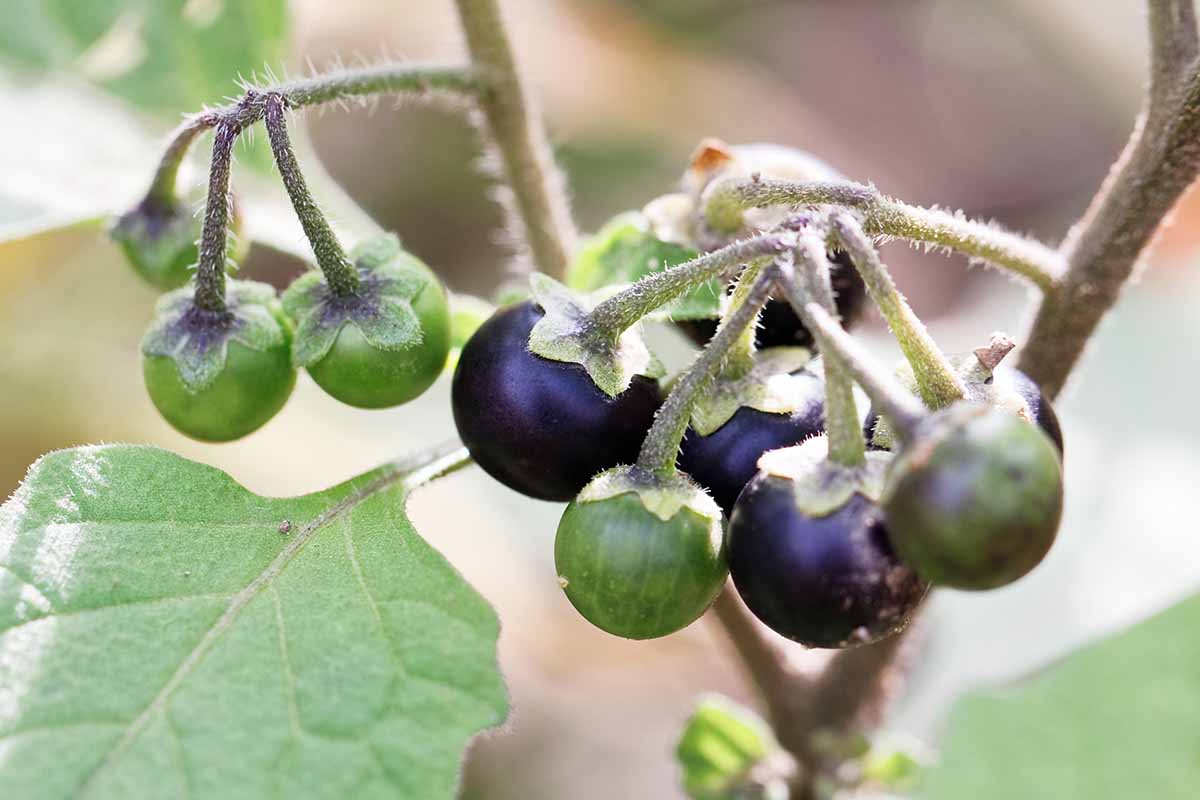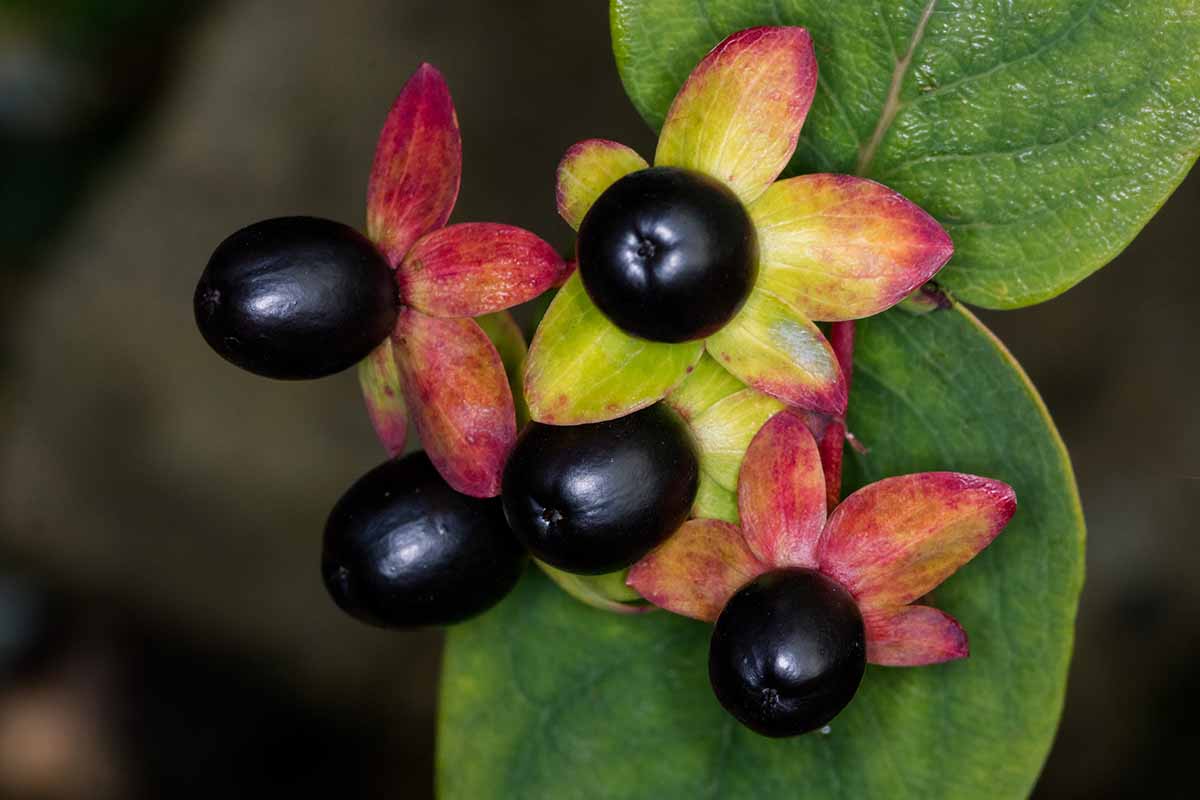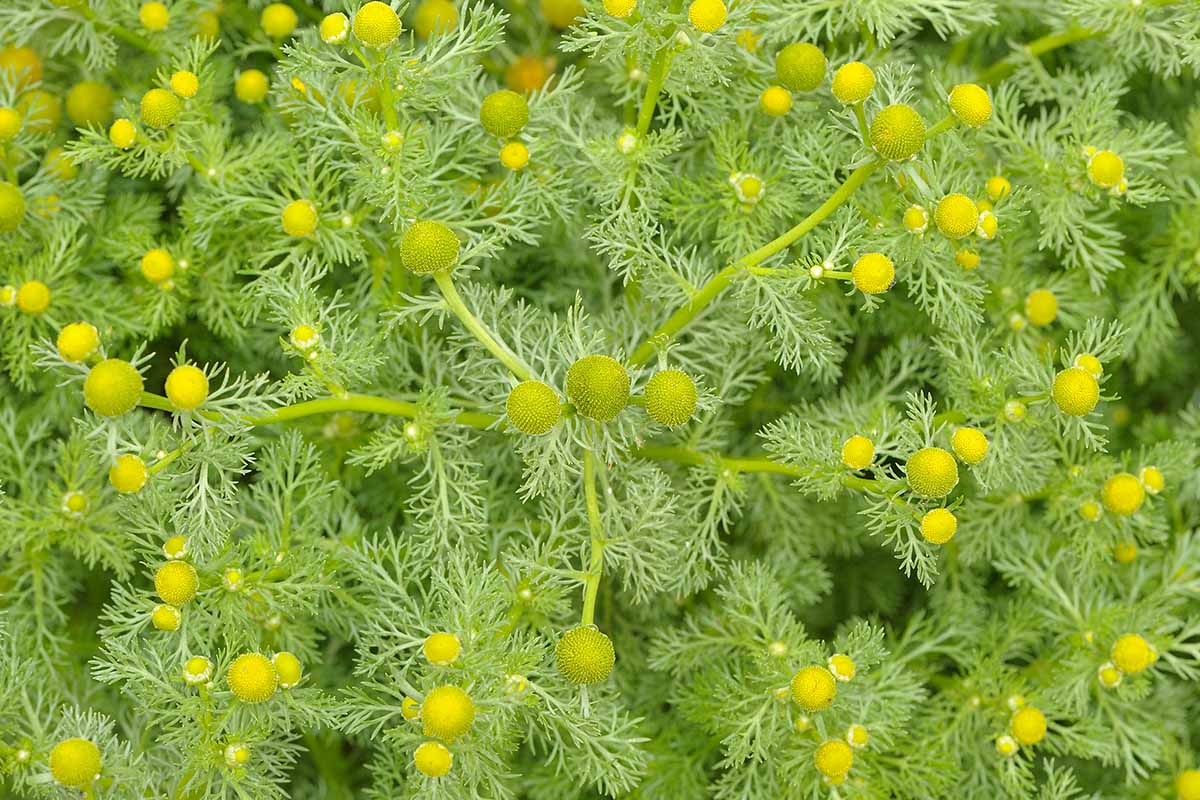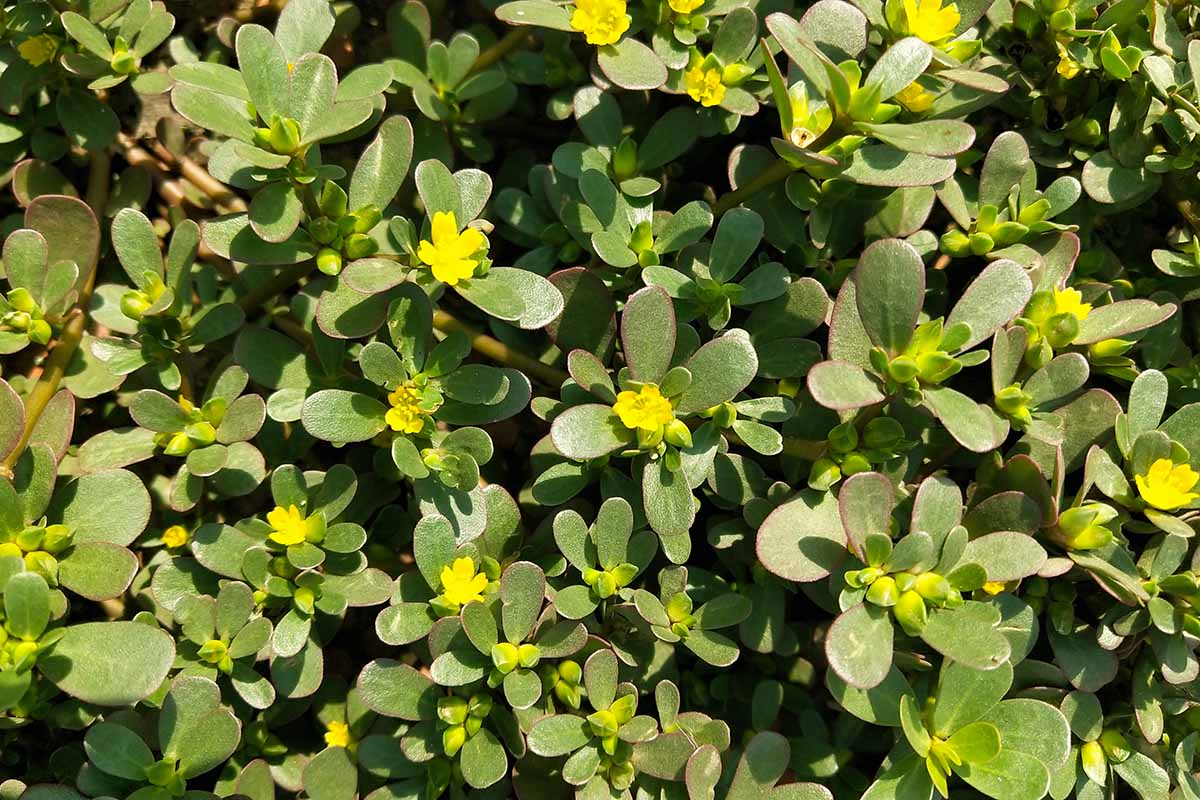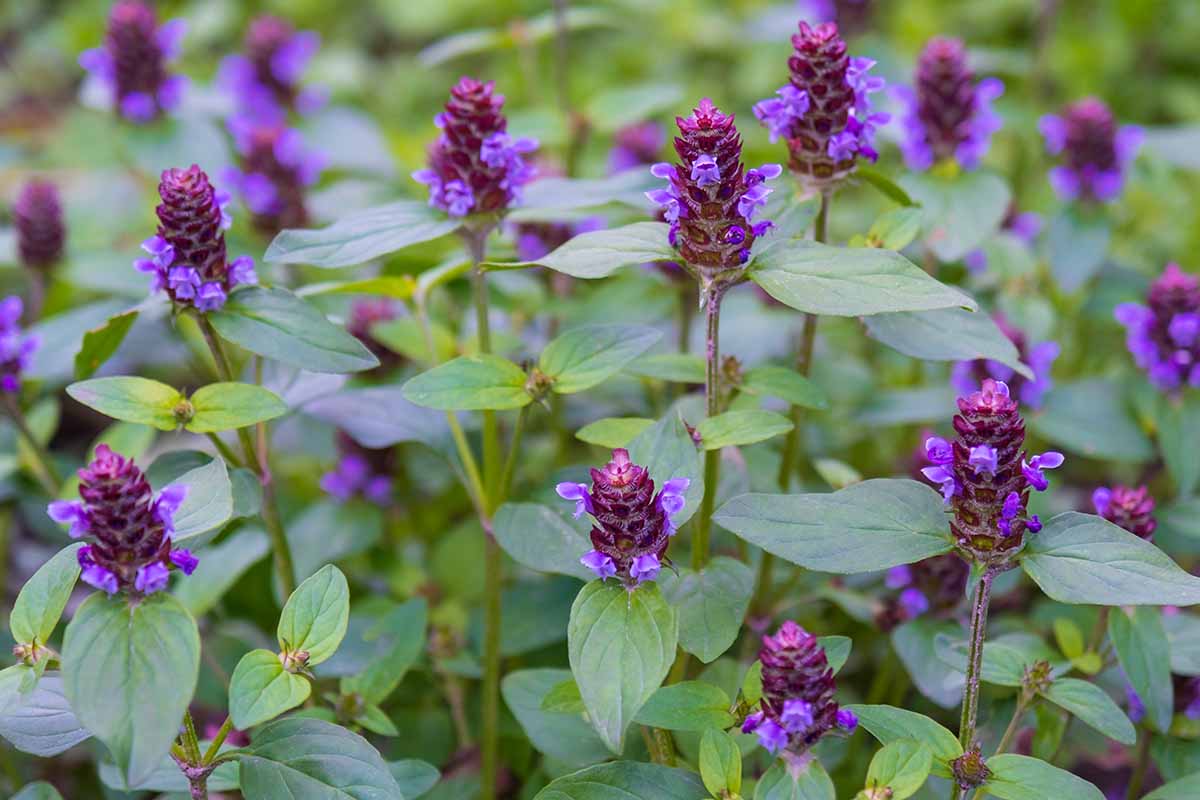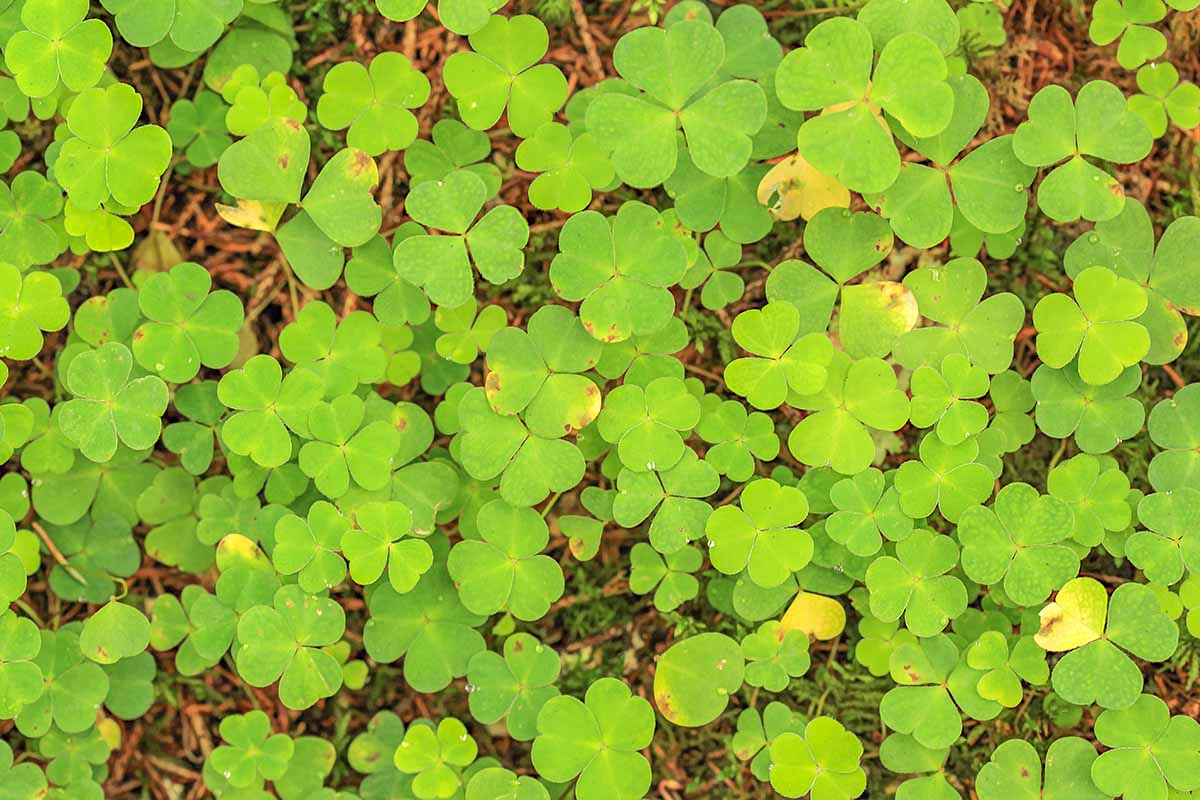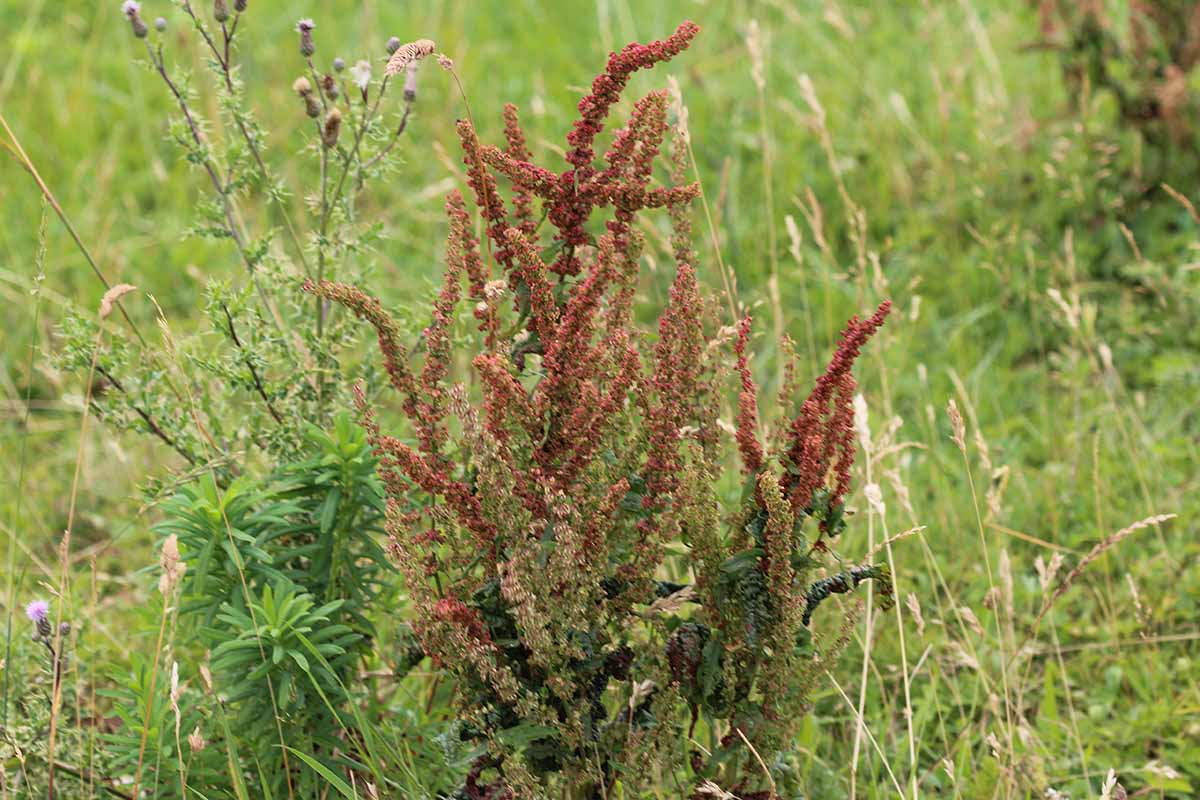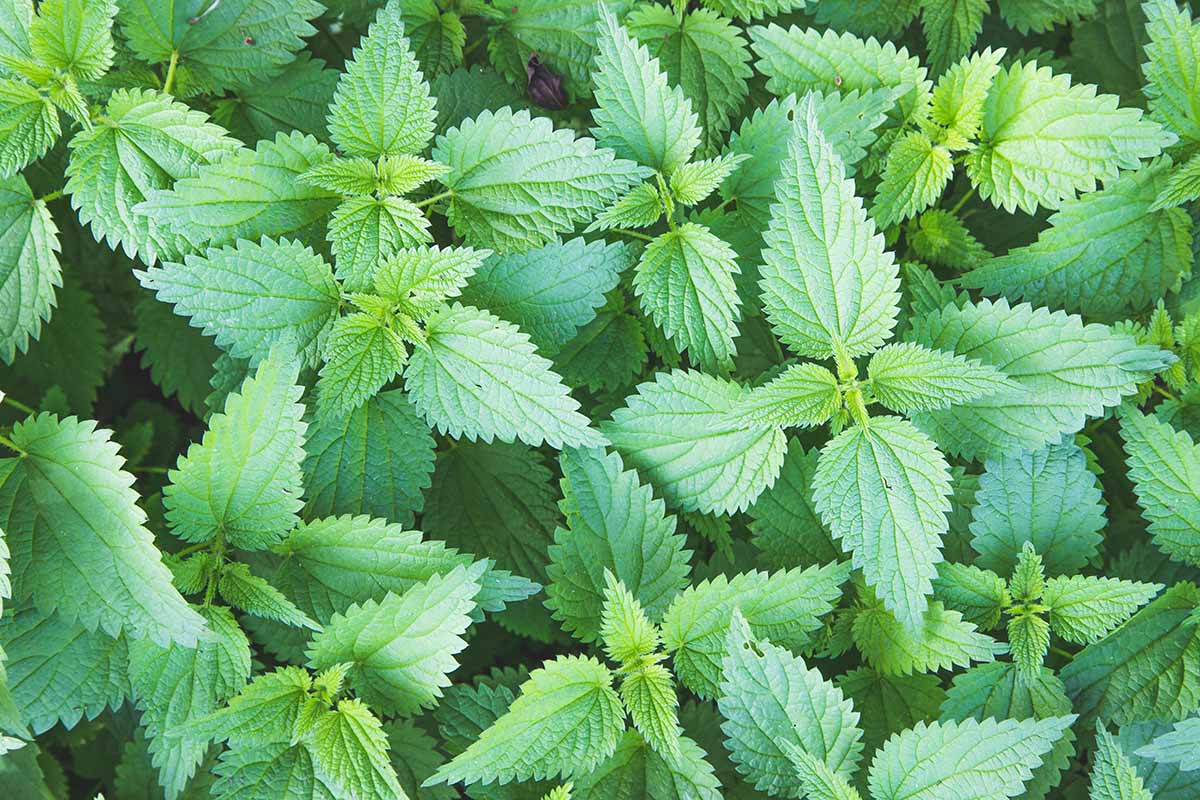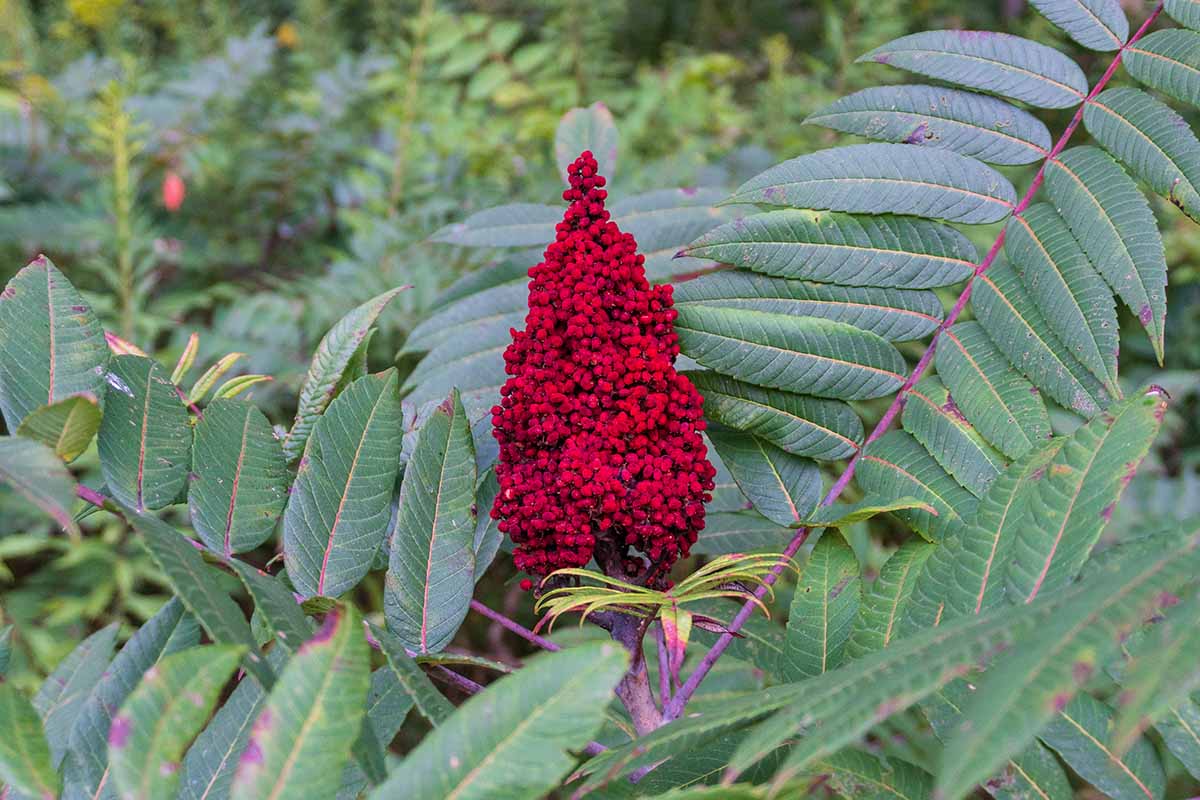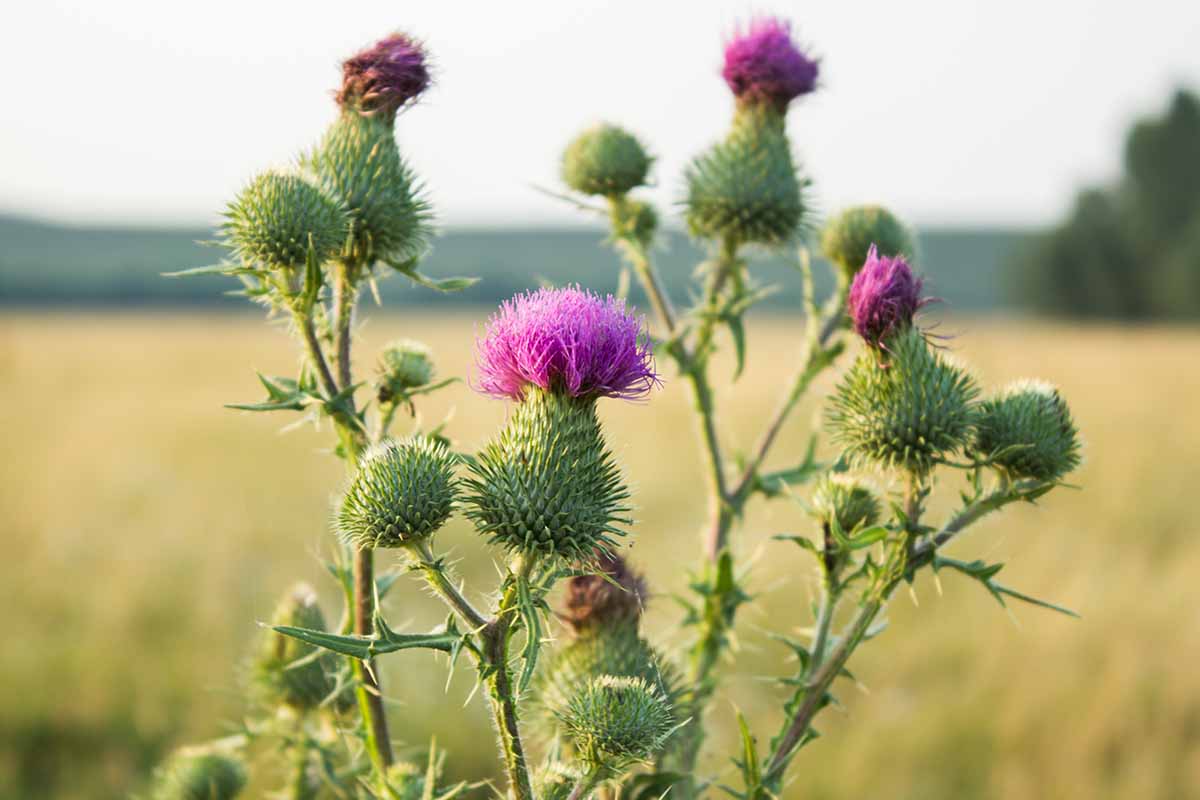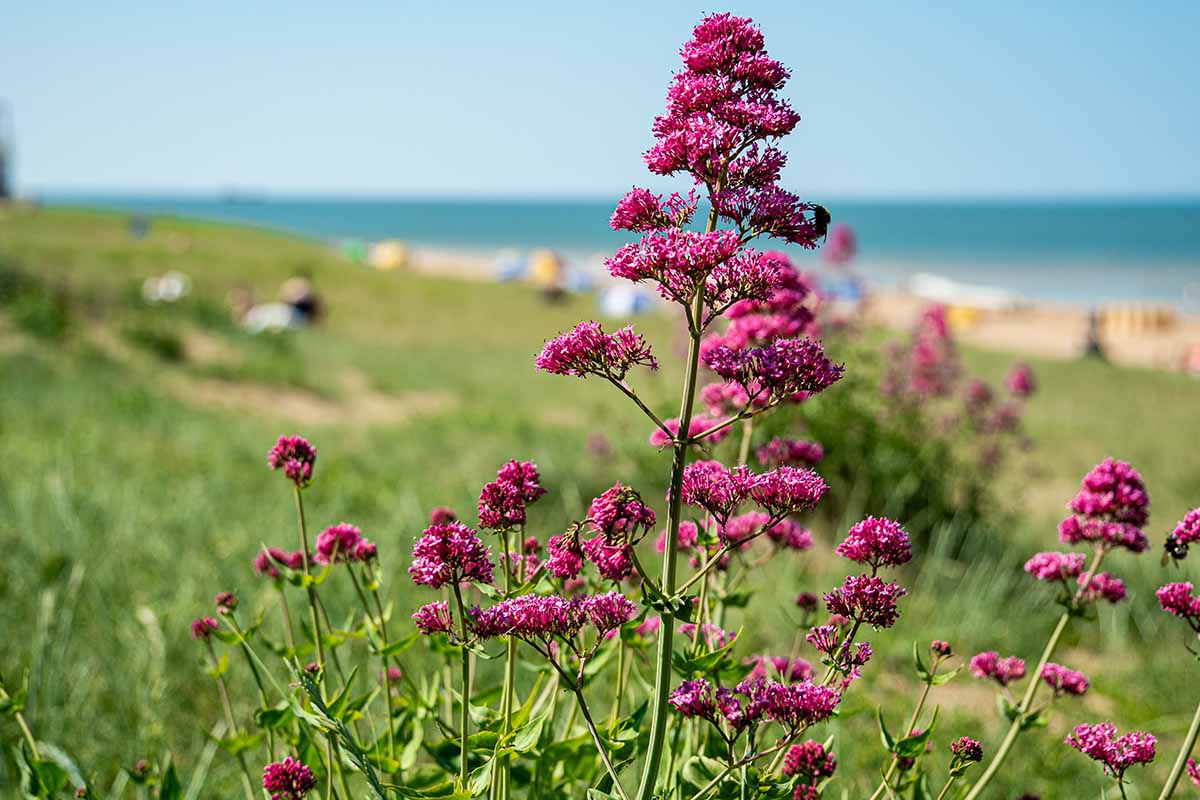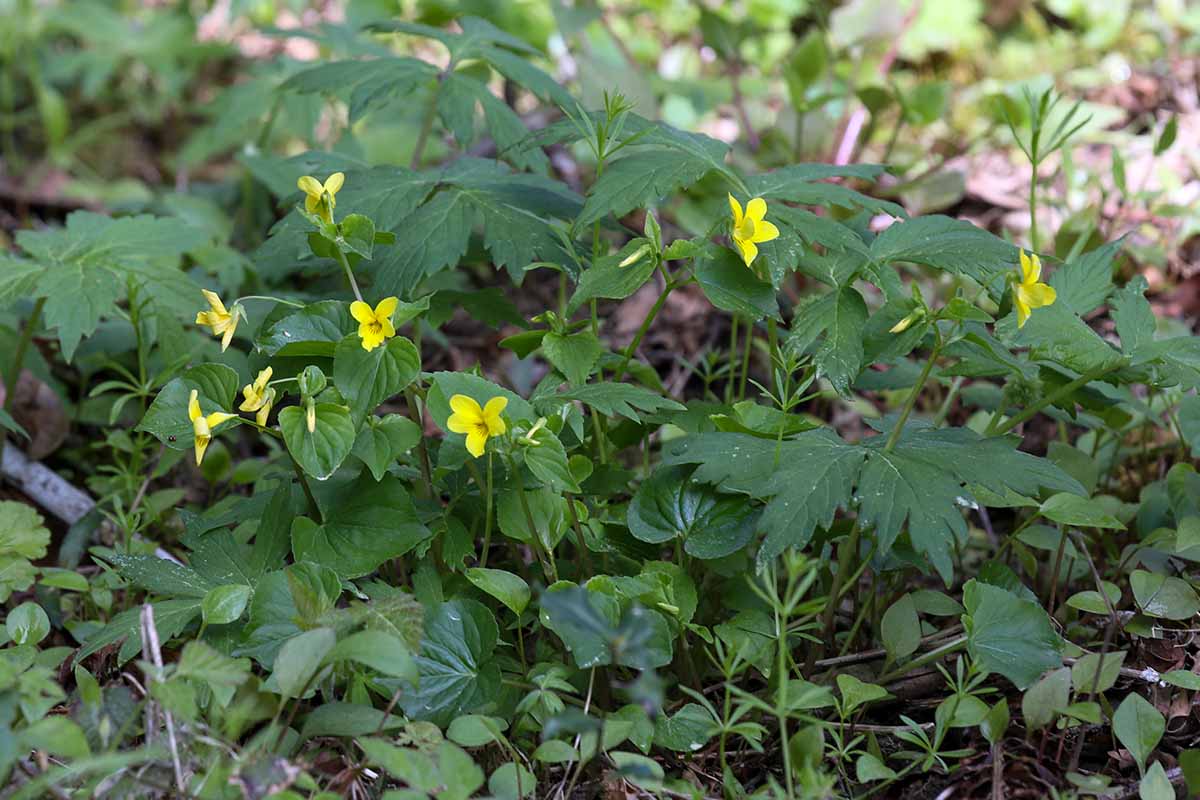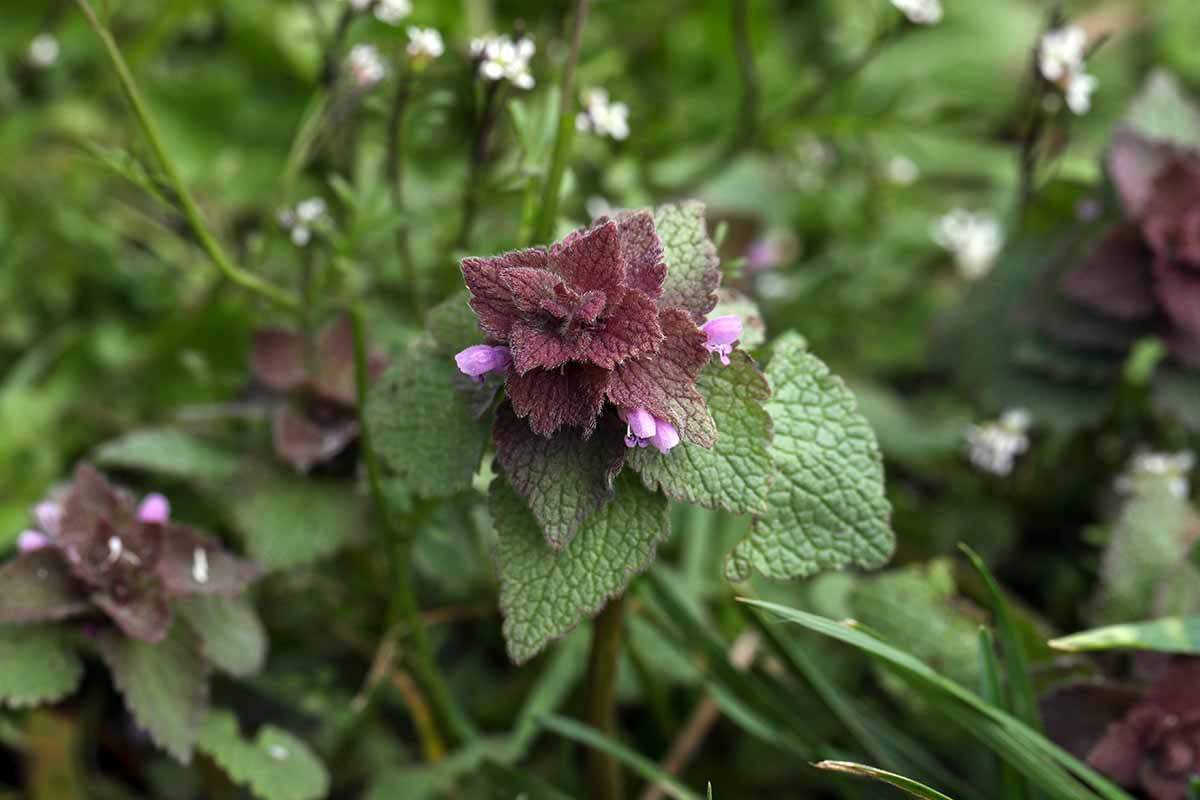It’s easy to disregard weeds as a troublesome nuisance to be yanked out or poisoned at the first opportunity. But many weeds are not only edible, they’re also medicinal and can improve your health, as well. We link to vendors to help you find relevant products. If you buy from one of our links, we may earn a commission. Today, so many foragers delight in using the leaves, flowers, roots, and even the buds. You can even buy dandelion greens at the grocery store. It’s a rags-to-riches success story for a plant that was once mercilessly destroyed. Now, this list could go on forever, so we’ll stick to the North American species that you’re most likely to find in your yard or nearby spaces like abandoned lots or roadsides. Here are the “weeds” we’ll discuss coming up: You might be surprised by how many edible wild plants are out there. Of all the known plants, edibles make up about a quarter of them. A vast majority – about 70 percent – of edible wild plants are used primarily for the greens, with just five percent of wild foods being made up of seeds and nuts. That means you probably can’t survive by eating weeds alone. But every single weed on this list has at least one medicinal use, so even if you don’t plan to eat all of these, they still have value. It goes without saying – but I will emphasize it anyway – that you should always, always be certain that you’ve identified the weeds you pick correctly. You should also be certain that you’re only harvesting the plant you’re aiming for. Some plants, like chickweed, can often be found with other plants like poison hemlock growing among them. I left a few common weeds off this list because they have some poisonous lookalikes that make them hard to identify for the beginning forager. Everyone reacts to plant chemicals differently, so be sure to proceed with caution and taste sparingly if you aren’t sure about any potential allergies. Medicinal applications should always be used under the guidance of a licensed health care practitioner, and one’s personal health status as well as potential prescription drug interactions should always be considered.
For instance, cow parsley is a marvelous substitute for chervil, but it’s hard to tell apart from poison hemlock unless you know what to look for. Alright, enough with the chat. Let’s jump in.
1. Bitter Cress
There’s some debate about what constitutes a bitter cress, but basically any species in the Cardamine genus qualifies, while those in the Dentaria genus are considered toothworts. Some taxonomists and horticulturists consider separating Dentaria species from those belonging to the Cardamine genus to be outdated, and many have been reclassified. But in the practical world, most people maintain the separation to help with identification – which is particularly useful for foragers. Both are edible, but bitter cress is more weedy and found in yards. Toothworts have a better flavor and grow from rhizomes that are extremely tasty, with a mild horseradish note. Consider bitter cress an herbal seasoning rather than the main course. It doesn’t have a bitter flavor – surprise! – but more of a mustardy note. You’ll most often run across hairy bittercress (C. hirsuta), particularly in well-irrigated lawns, which are one of its favorite spots. The plant forms a basal rosette of petite leaves on a long stalk. In the spring, small white flowers appear on upright stems. Both the seeds and the leaves are the best part to eat, but the entire plant is edible. Note that some species of bitter cress are native and listed as endangered or at risk, so aim for the weedy species that you find in your yard rather than the rare stuff that grows in forest understories.
2. Borage
Borage (Borago officinalis) can be weedy in some areas, while in others it’s a treasured wildflower or a carefully cultivated herb. Again, it’s all about perspective. The bright blue flowers make a pretty addition to a wildflower garden and pollinators love them. The leaves and flowers taste like cucumber and the whole plant has long been used to treat anxiety and depression. To learn more about borage, read our guide.
3. Brambles
Bramble is actually a term for multiple plants in the Rubus genus. While we love some berry plants like salmonberry and raspberry, others like the Himalayan blackberry (R. armeniacus) are definitely a nuisance. If you’ve ever been grabbed by the ruthless thorny vines, then you know what I’m talking about. They can quickly take over your entire yard, plus the neighbor’s yard too. But as annoying as this invasive plant is, the blackberries it produces are delicious. In the summer when the berries are so ripe that they burst when you merely walk by, you can find me stuffing my mouth full of them. You might want to wash the berries first, because they’re often full of tiny little bugs. Or just consider them some bonus protein. By the way, you can also eat the young shoots. Peel the spiny exterior and eat the interior.
4. Burdock
If you have burdock (Arctium spp.) in your yard, consider yourself lucky. I know, it seems like having the Velcro-like burrs latching onto your dog’s fur or your favorite sweater couldn’t be anything but a curse. I mean, the seed heads actually inspired the inventor of Velcro, after all. But the roots, stems, and shoots can be eaten, and they’re delicious. You can also eat the leaves, but they’re not so delicious unless you do a lot of work to prepare them. Burdock is also used medicinally as a diuretic and to ease constipation. The leaves can be used as a poultice to treat rashes and eczema. Look for the large, ruffled, arrow-shaped leaves in disturbed areas and abandoned gardens. You can almost mistake burdock for young rhubarb plants. The spiky, thistle-like flowers don’t emerge until the plant’s second year, as it’s a biennial. So feel free to use the whole thing up in the first year. When you dig the plant up, you’ll find a carrot-like taproot that can weigh as much as three pounds. Burdock root is extremely popular in Japanese, Russian, and Korean cuisine, though I wouldn’t recommend trying to cultivate this plant. Known as gobo in Japan, it’s invasive and you don’t want it taking over your garden. Just go for the wild stuff, since it’s everywhere. Don’t confuse burdock with butterbur (Petasites hybridus), which has rounder leaves and red flowers. Burdock’s flowers are purple. Though their names sound similar, burdock isn’t related to dock, which we’ll discuss in just a bit.
5. Chickweed
Chickweed (Stellaria media) is an invasive weed (it’s right there in the name!) that came to North America from Europe. Fortunately, it also has edible leaves, stems, and flowers, so you can put it to good use. As an added bonus, it can be evergreen and survives the winter under dense conifer cover where few other plants can thrive, which means you have a winter source of nutrients. Chickweed has a sweet, grassy flavor that makes a nice addition to salads or a sandwich. Use the leaves of this weed instead of basil to make pesto. Dried, it makes a tasty tea. Of all the plants on this list, it’s one of the best-tasting, so don’t pass it up. Medicinally, it can be used to make a poultice, as a diuretic, and as an emollient. The tea is useful for treating a dry cough. Chickweed is an annual that crawls along the ground, with small, oval leaves, a round stem, and small white flowers. It’s common in garden beds, especially rose beds. Don’t confuse it with scarlet pimpernel (Anagallis arvensis), which is toxic, and has square stems and red flowers. Look for the line of hairs on just one side of the stem. The side where these appear changes between each node That’s a definitive way to tell chickweed apart from any lookalike.
6. Chicory
More and more these days, chicory (Cichorium intybus) is being cultivated once again as a veggie and a coffee substitute rather than being pulled as an unpleasant weed. It’s easily identified by its bright blue-purple inflorescences on stalks that grow up to three feet tall. Look for it on roadsides and in disturbed areas. The roots, leaves, and flowers are all edible, but the root is what most people use. If you roast the root in the oven until it’s dark brown and hard, you can grind it and brew it like coffee. The leaves have a spicy flavor, while the flowers are a bit more subtle. Most people prefer the flavor of dandelion greens over the more bitter ones of chicory, but I find it’s a matter of proportion. Just like endive can be a fabulous addition to a bowl full of lettuce greens, some chopped chicory leaves are also a pleasant addition. If the leaves aren’t your thing, harvest the crown of the plant, remove the root and the green parts of the leaves, and eat the crown whole or chopped. Medicinally, it’s considered an inferior substitute for dandelion, with the same diuretic, laxative, and liver-stimulating qualities. I always feel lucky to have chicory in my yard. Not only is it edible, but I think the flowers are simply stunning. The vibrant blue-purple hue stands out, and each blossom only appears for a day before it is spent.
7. Claytonia
Claytonia includes several species of plants that go by various names, such as miner’s lettuce, spring beauty, pink purslane, and candy flower. The latter common name is no misnomer. The blossoms are so incredibly floral and sweet that you might think you’re eating candy. These plants are related to purslane, and miner’s lettuce (Claytonia perfoliata) is perhaps the easiest to identify. It has little cup-shaped leaves that are speared by the stem of the plant. Candy flower (C. sibirica) has small white, pink and white striped, or pink flowers atop fleshy stems.
8. Cleavers
Cleavers (Galium aparine) earned their name because the leaves cleave to clothing, pet fur, and just about anything else they can get their tiny hooks into. This species prefers moist areas, but it’s not too picky and you can find it in drier areas, as well. The shoots and leaves are edible, but keep in mind that there are annual and perennial forms of this plant, and the perennials have leaves that are covered in jagged hooks. These hooks will become stuck in your throat, making them difficult to swallow unless you boil them first. Young leaves or ones from annual forms don’t have the hooks. This plant looks somewhat like sweet woodruff, with five lanceolate leaves emerging from a central stalk, and small white flowers. This plant is used medicinally as a diuretic and topically as a salve.
9. Clover
Clover is cultivated in some areas of Europe and North America as fodder, but in others, it is an annoying weed. Red clover (Trifolium pratense) is particularly worth pulling from your garden because it’s high in protein, calcium, and B-complex vitamins, and vitamins A and C. Eat the leaves and flowers. A tea made from the leaves can be used to soothe coughs and throat irritation.
10. Creeping Charlie
Ground ivy, or creeping Charlie (Glechoma hederacea), has kidney-shaped, toothed leaves and purple flowers from March to June, depending on where you live. It’s extremely common in lawns and other garden areas that receive regular moisture. While it’s toxic to horses in large amounts, the leaves are safe for human consumption. The dried, crushed leaves are used medicinally to treat coughs, bronchitis, and other lung issues.
11. Dandelion
We all know and love the good old dandelion (Taraxacum spp.). With its oblong, heavily toothed leaves and bright yellow inflorescence, it’s a common weed in lawns, fields, gardens, and roadsides. The roots, flowers, and leaves are all edible. The young leaves are grassy and mellow, while the older leaves take on a bitter flavor. They’re edible raw or cooked, and the flowers are best eaten raw. You can make dandelion wine, syrup, and coffee, or even harvest the tightly-packed flower buds to make dandelion capers. And dandelions have more beta-carotene than carrots! You can even find newer cultivars of dandelions that are intended to be cultivated and eaten or grown as ornamentals. It’s about time dandelions made a comeback, because they have been an important part of human culture for as long as we have kept records. If you missed harvesting the young leaves, you can place a piece of cardboard over the plant for a few weeks to blanch it and reduce the bitterness. If you plan to harvest the roots, at which point the leaves are usually older and bitter, consider drying the leaves to use as a parsley-like herb. It’s also valuable medicinally for digestive issues and treating skin injuries.
12. Dead Nettle
Dead nettle (Lamium purpureum) is in the mint family, but these plants look more like stinging nettles. When you rub the leaves between your fingers, however, you can understand the mint relation because of the pungent aroma that’s released. You can find this weed almost everywhere – in lawns, disturbed areas, gardens, and just about anywhere else that they’re given the opportunity to grow. They pop up early in the year and stick around during the winter in mild regions, where they send up purple flowers. Dine on the leaves, flowers, and stems. The purple leaves tend to be a bit sweeter than the green ones. Medicinally, people use this species as an astringent and a diuretic. It looks a little like henbit (L. amplexicaule), but both are edible, so don’t worry about plucking something toxic by accident.
13. Dock
There are about 200 different species of docks and their close relative sorrel across the US. Curly dock (Rumex crispus), western dock (R. occidentalis), and broad-leaf dock (R. obtusifolius) are the most common. The leaves are lance-shaped and green, sometimes with red spots and veins. The margins are often curled or ruffled. There are native docks, such as western dock, but most of the others are alien species that are prone to spreading unchecked. If you can find patience dock (R. patientia), you’re extra lucky. This is widely considered the most flavorful species. The leaves, fruits, and seeds are edible. Foragers grind the seeds to make a flour substitute, which has a delicious nutty flavor – which isn’t a surprise since docks are related to buckwheat. I’ve also used the seed stalks as additions to fall bouquets. The stalks are edible as well, but they need to be peeled before you dig in. They have a similar taste and texture to rhubarb. Some species, such as curly dock, contain a lot of oxalic acid, so don’t eat too much at once. By the way, if you run into stinging nettle in your weed-hunting adventures, chew a dock stem for a few seconds and then place the chewed bits on the area where you were stung. It will ease the pain. Most people believe the leaf is the part to use, but it’s the gel-like goo inside the stems that does the trick. It also works on insect stings and bites. To tell if you have a truly tasty dock specimen and not one that is going to be bitter, look for smooth, long, narrow leaves without red or purple markings anywhere. You can eat the plants and leaves with red markings, but they might not taste as good. Licorice ferns (Polypodium glycyrrhiza), which grow on trees, have edible rhizomes that have a sweet, licorice flavor that native people enjoyed as a sweet treat. Young, green rhizomes are best. I learned this tip from renowned foraging expert Samuel Thayer in his book “Nature’s Garden: A Guide to Identifying, Harvesting, and Preparing Edible Wild Plants,” and it has never steered me wrong. If you want to learn more about foraging and eating wild foods, this book is considered the bible for foragers. Nature’s Garden
14. Ferns
Ferns can be a lovely addition to your yard or a pain in the you-know-what, depending on whether you want them there or not. Some ferns are native and make a positive contribution to the environment, while some are introduced weeds and can become invasive. Lady ferns (Athyrium filix-femina) have edible fiddleheads (the curled, young, sprouting fronds) and roots. You can also eat the fiddleheads of bracken ferns (Pteridium aquilinum), though they’re a bit more controversial in edible use because these are potentially carcinogenic. They contain ptaquiloside, which is a known carcinogen. If you decide to eat bracken fiddleheads, limit your consumption just to be safe. Sword ferns (Polysthichum munitum) have edible roots that have a licorice note. Eat them steamed or roasted.
15. Fireweed
Fireweed (Chamerion angustifolium) is so pretty that I’m surprised so many people hate it. It has long, lance-shaped leaves and pink or purple flowers on long spikes atop three- to eight-foot-tall stalks. This edible weed prefers moist soil, so you’ll find it near streams or in depressions where water gathers. The shoots, stems, leaves, flowers, and roots are all edible, and the inner stem is super sweet and juicy. Fireweed contains lots of beta-carotene and vitamin C. It also has a mild laxative effect.
16. Garlic Mustard
Garlic mustard (Alliaria petiolata) started out as a cultivated mustard family vegetable that went to seed and escaped into the wild. Now, it’s one of the most hated weeds out there because it displaces wildflowers. This is due to its allelopathic properties, which inhibit the growth of other plants, and it’s nearly impossible to eradicate. Left unchecked, it can turn the forest understory into a vast monoculture field of garlic mustard. But the story isn’t all bad news. It’s one of the best weeds out there for adding flavor to your dishes. If you’ve ever pulled this weed from your garden, then you know where it got its name. It smells distinctly of a mix of garlic and mustard. You can eat the leaves raw or cooked, the taproots can be cooked or grated raw, and the flowers can be eaten raw or cooked. However, most people prefer the young stalks or the flowering shoots before they open. These taste the best, with a mild mustard bite and a dominant broccoli-like flavor. If you can’t use them all up, blanch and freeze the stalks. They’re also good as an asparagus substitute. The mature leaves can be extremely strong in flavor, which is why I like to dry them and crumble them to use as seasoning. A little bit goes a long way. This species is incredibly invasive, which is why you should be careful not to spread the seeds. I can’t emphasize this enough. I’m lucky enough not to have garlic mustard in my yard, which is why I have trilliums, wood violets, candy flower, waterleaf, and toothwort growing. If I did have garlic mustard, none of these wildflowers would likely be around anymore. If you encounter wild mustard, be sure to clean your shoes and tools before walking around or using them in your yard. The seeds are tiny and they can hitch a ride without you knowing it. Garlic mustard’s invasive nature also means you should feel free to pull up as much as you want. Go to town! Don’t hold back! Heck, pull enough to dry, bottle and hand out as gifts to everyone you know during the holidays. Try to get to the plant before it flowers. Once it does, not only does the taste deteriorate, but the seeds start to spread. While you’re at it, pick a little extra to use medicinally to treat congestion and head colds, and to encourage sweating.
17. Goosefoot
The leaves of orach, aka goosefoot (Atriplex patula and A. hastata), are slightly salty with a tangy bite. These plants are semi-succulent, with triangular leaves that are lobed in such a way that they resemble the footprints left behind by a goose. Use the leaves as you would spinach. You can also eat the seeds raw or roasted. Goosefoot prefers salty soil, so those who live near the ocean or other salt-water shorelines are likely to come across this plant. It’s used medicinally for topical applications and as a laxative – so don’t eat too much all at once! This plant is often confused with lamb’s-quarter, which we’ll cover in more detail a little later, and they do look similar. Both are edible and both taste good, so don’t fret if you can’t tell these common weeds apart.
18. Gorse
Gorse (Ulex spp.) originally came from Europe but the plant has become a weedy invader across the globe. The bright, cheery yellow flowers have an incredible vanilla and coconut aroma, and a flavor that works well in desserts. Just mind the vicious spikes that poke out from the flower heads. Medicinally, gorse is used topically to repel fleas.
19. Horsetail
Horsetail is a distinctive plant. Two species are prevalent in the US, common horsetail (Equisetum arvense) and giant horsetail (E. telmateia). The plants look something like what might happen if asparagus and bamboo had a baby. Both have long, unbranched stems with black tips. The hollow stems are covered in whorls of branches. Horsetail grows in moist areas near roadside ditches and swamps. While this plant is toxic in large doses, particularly to livestock, the young shoots can be eaten if you peel the hard outer sheath and steam them. You can reduce toxicity and remove bitterness by dumping and replacing the water multiple times while cooking. Don’t eat any mature parts of the plants. Horsetail is used medicinally as a diuretic and to treat lung issues.
20. Knotweed
If you have this plant in your garden, you probably curse your bad luck. It’s incredibly invasive and, in places like the Pacific Northwest, it is taking over many parts of the landscape. These tough plants can even push into houses or through cement. Giant knotweed (Polygonum cuspidatum) and Japanese knotweed (P. sachalinense) are the most common species found in the US. The plant has bamboo-like stalks and heart-shaped leaves. The stems are hollow and reddish-brown. While it shouldn’t be encouraged to grow at all, if you do have it growing wild, set aside the shoots as you try to eradicate it from your garden. They’re fabulous! They have a lemony, rhubarb-like flavor which has contributed to this plant being used as a rhubarb substitute in some areas. The shoots must be flexible and springy. Once they harden, they become inedible.
21. Kudzu
Along with garlic mustard, kudzu (Pueraria montana) is one of those weeds that you dread seeing in your garden. It’s incredibly, shockingly, surprisingly invasive. Also like garlic mustard, it’s edible, so eat it as much as you possibly can. The leaves, roots, flowers, and vine tips are edible, but the vines, seeds, and seed pods are not. The plant’s slimy texture when cooked can be used to thicken soups or as an okra-like addition to a recipe. The texture is part of the reason that people like to use this plant in the kitchen, because the plant itself doesn’t have much flavor at all. The root has been used for centuries in Chinese medicine to treat nausea, hangovers, and the flu. You can also buy kudzu powder in Chinese grocery stores, to use as a thickening agent in cooking.
22. Lady’s Thumb
In wet areas, look for multi-monikered lady’s thumb, smartweed, Vietnamese coriander, or redshank (Persicaria maculosa). This buckwheat relative can survive in fairly dry areas as well, so don’t write it off just because you don’t think your garden is wet enough. The weed has lanceolate leaves on brown-red stalks and every part is edible, if not necessarily flavorful. Look for the dark pigment at the center of the leaf, which is said to resemble a thumbprint. Lady’s thumb is also indispensable as a medicinal herb. It is used topically to treat rashes, or insect stings or bites. Internally, it can help to ease stomach pain.
23. Lamb’s-Quarter
Pigweed, white goosefoot, and lamb’s-quarter – Chenopodium album and C. murale go by many names. These have succulent leaves that are toothed and triangular, oblong, or diamond-shaped. The leaves have a fine white coating on the undersides. In the summer, the plants are covered in stalks of silvery-green flowers. You can find lamb’s-quarter in disturbed areas, but these weeds prefer loamy, rich soil. The one thing they always require is full sun. Once you find them, you can eat the leaves, flower buds, and flower shoots. Some people suggest eating the seeds, while others say they might be slightly toxic. The seeds are high in potassium, calcium, and phosphorus. Lamb’s-quarter is related to quinoa and the seeds are often used as a substitute. Use the greens as a veggie, potherb, or salad green, or dry them to use as a seasoning. Of all the plants on this list, lamb’s-quarter has some of the most delicious leaves. This is truly a forager’s best friend. It’s around when many other plants are dormant or the conditions are too dry. Even after it goes to seed in the late summer, the seeds can be harvested and used until they drop from the plant, which takes months. It’s also incredibly nutritious and flavorful.
24. Mallow
Malva neglecta, commonly known as mallow, is an incredible edible. You can eat the leaves and flowers raw, cooked, or dried. Plus, the seeds are large enough that you can use them as you would rice. But even more exciting are the “cheeses.” The flowers are white, blue, lilac, or pink. After the flowers fade, “cheeses” or “cheesewheels” form. These are little yellow-green fruits that you can use as you would okra, or just eat them fresh. Once the cheeses dry on the plant, you can harvest the seeds. Because this plant is so common across the globe in disturbed areas and roadsides, you can gather enough seeds to make enough mallow rice to feed a family! If you’re really adventurous, you can boil the roots to create a gelatinous goo that you can use to make homemade marshmallows. The root can be boiled and used topically to soothe rashes or other types of skin irritation, or boiled to ease a cough or sore throat. All parts of the plant are a bit mucilaginous, so some people don’t like the raw texture. This effect is reduced when you cook it. On the medicinal side, chewing the leaves releases the mucilage that can help to relieve a cough or sore throat. Mallow leaves look a bit like those of geraniums. If you’re not certain that you’ve found mallow, look closely at the spot where the stem meets the leaf. There should be a little red spot there.
25. Mullein
Mullein (Verbascum spp.) isn’t a weed that you’ll usually see in gardens or lawns, but it’s constantly popping up along roadsides and in disturbed areas. When boiled in milk, the leaves release a gelatinous sap that some people use to ease a sore throat or cough. You can also make tea out of the leaves or yellow flowers. While you should never eat the seeds, the young leaves are edible when boiled. I say “edible” because they’re not the most flavorful, but they are nutritious. Mullein is easy to identify. It has gray, hairy leaves and a flower spike that can grow up to seven feet tall, covered in yellow blossoms that almost look like a stalk of corn.
26. Nightshade
There’s one plant that people can never seem to embrace when we talk about eating weeds. No matter how many times I’ve assured my friends that nightshade is not only edible, it’s delicious, they still fear that it might be secretly “deadly.” If the idea of eating nightshade freaks you out, just remember that potatoes, tomatoes, peppers, and eggplants are also nightshades. The weedy form of nightshade is called black nightshade (Solanum nigrum). To clarify, there are actually multiple species that are usually lumped together in the “Solanum nigrum complex.” These include S. interius, S. douglasii, S. ptycanthum, and S. americanum. S. nigrum is native to the Mediterranean, while the rest are native to North America. While it doesn’t get much attention as an edible in the US and Europe, it’s one of the most well-used weeds in the rest of the world. It’s sort of like the dandelion, amaranth, or stinging nettle of Africa and Asia, where billions of people eat it regularly. Native people in North America have also consumed the berries for centuries. You can sometimes find this plant at nurseries under the name “garden huckleberry.” Most people identify the plant by the dark, nearly black berries that follow the whitish flowers, which bloom in June. The leaves can be lanceolate or diamond-shaped, and vary in size. Nightshade is a common weed in gardens, fields, abandoned lots, roadsides, and other disturbed sites. So where does the myth that nightshade is deadly come from? Well, it looks a bit like the plant commonly known as deadly nightshade, or Atropa belladonna, which is native to Europe. Fortunately, it’s pretty easy to tell the two apart. Belladonna has single, cherry-sized fruits on upright stems, while black nightshade bears pea-sized fruits in clusters on sprawling, climbing, or crawling stems. Belladonna also has purple flowers – not white ones – and it is rare in most of the US. You usually only find it on the coasts. Once you’re sure you’ve identified the right plant, you can use the berries as you would any other. Eat them in pies, made into jams, as a topping for desserts or yogurt, or just by the handful. They taste like a ripe tomato and a blueberry had a delicious baby.
27. Pigweed
Pigweed can be an annoying weed or an invaluable crop, depending on your perspective. Some species are cultivated for the seeds, like the crop we call amaranth, and some are grown as ornamentals, like love lies bleeding. Others pop up in vacant lots and disturbed fields, and resolutely refuse to budge no matter how much you plead with them to leave. Redroot amaranth (Amaranthus retroflexus) is the most common weed in the US in this genus. The flower clusters are spiny and they have a musty scent. The lower part of the stem is red, making it easy to pick out. If you dig it up, the taproot will be red as well. You can eat the leaves and stems, and they’re particularly tasty when they’re young. Amaranth is high in protein and many vitamins and minerals, which is why it is cultivated as an easy-to-grow source of nutrition in developing nations.
28. Pineapple Weed
Where there is compacted ground, there’s likely pineapple weed (Matricaria discoidea). This stuff isn’t afraid of rocky, hard soil and it pops up where most other plants fail to thrive. It looks a bit like chamomile, to which it’s closely related. But you can tell pineapple weed apart from its cultivated relative by looking at the petals. On pineapple weed, there are none, or very few. The seed head on chamomile is ringed by petite white petals. This species only grows from the Rocky Mountains west. You can eat the flowers and leaves. Just as you might drink chamomile tea for its calming abilities, pineapple weed is used medicinally for the same effect.
29. Plantain
There are dozens of species of plantain in the US, with most of them being invasive imports from Eurasia. Common plantain (Plantago major) is also known as broadleaf plantain, while ribwort (P. lanceolata) is just as common, but didn’t earn the “common” epithet. In some areas of the US, plantain is just as common as dandelion and grows in similar areas, including through cracks in sidewalks. Native Americans called plantain “white man’s footprint” because Europeans brought it with them everywhere they went, and the plant quickly settled in. Bad news for local ecosystems, good news for weed eaters. You can eat the leaves and seeds of this plant. Young leaves are tasty fresh, while older greens should be cooked. Try them battered and fried. The fresh seeds are marvelous when added to breads or crackers, or ground as a wheat flour alternative. The seeds can also be roasted or boiled, though the latter option activates their mucilaginous quality. Foragers use it as a substitute for store-bought psyllium fiber – which in fact comes from plantain seed! Several species are called psyllium commonly, and P. ovata and P. psyllium are often used to make the fiber supplement. Plantain leaves may be used as a poultice by boiling them and placing them on a wound. The leaves also have a mild laxative effect, while the effect of the seed is more pronounced. And the seeds of P. psyllium have a much more pronounced laxative effect, so use caution. Look for the wide, oval leaves and long, green flower spikes that follow the white flowers. Plantain is a common sight in disturbed areas, especially those with compacted soil.
30. Purslane
I don’t know what it is about purslane (Portulaca oleracea) and roses, but the two seem to be joined at the hip. This weed grows across the US and is cultivated in many areas, particularly the varieties known for their flowers. In fact, if you’re interested in cultivating some in your garden, we have a guide to help you out. Look for purslane in disturbed areas, sandy soil, and in rose beds. It has small, succulent leaves. You can eat all of the aboveground parts. The plant is often used medicinally as a diuretic and anti-inflammatory.
31. Self-Heal
You might have guessed by the name that self-heal (Prunella vulgaris) is valued for its medicinal qualities. Also known as heal-all or woundwort, people have used it to heal sore throats for centuries. But this mint relative is mostly reviled as a lawn-smothering weed. Self-heal has oval or lanceolate leaves on a square stem topped by purple flowers in the summer. You can eat the entire plant, roots and all, either cooked or raw.
32. Shepherd’s Purse
If you’re a fan of mustard plants, you’ll love shepherd’s purse (Capsella bursa-pastoris). The young leaves and seeds have a peppery, mustard-like flavor. Harvest as much as you can find, because this plant is invasive in some areas, and it can serve as a host to certain species of fungi that may infect the veggies in your garden. Look in disturbed areas and meadows for the narrow, oblong, toothed leaves extending directly out of thin stems. The plants are topped with heart-shaped seed pods and white flowers in the summer.
33. Sorrel
Sorrel is a term used to describe several different weeds in the closely related Oxalis and Rumex genera. Perhaps the best-known sorrel in the West is oxalis, aka wood sorrel or sour grass (Oxalis oregana). The leaves and stems of this little leafy green have a tart, apple-like flavor. It has three heart-shaped leaves that are often mistaken for clover. You can find this plant under trees or on the north side of buildings. If you have it in your garden, you likely have a bountiful source of nutrients available, because it’s pretty difficult to control. Sheep sorrel (Rumex acetosella) is actually a type of dock (see the section above) and another common weed that shows up in wet locations. It has arrow-shaped leaves and red or yellow flowers. The leaves are edible, with a tart flavor. Use them to make salsa verde or juice them with carrots and apples. Any of the Rumex genus sorrels can be used as a rhubarb substitute if you peel and cook the stems. Some species in this genus (such as O. tuberosa) are cultivated for the tubers, which are dried in the sun. Once they’re dry, they taste similar to figs. While the weedy versions we have in the US don’t have the same large tubers, you can still eat the smaller ones. Try them fresh or dried. Don’t eat a ton of any kind of sorrel, though, because these plants contains oxalic acid and can cause digestive upset in large quantities.
34. Stinging Nettle
Most of us have heard of nettle soup or nettle tea by now. Stinging nettles (Urtica dioica) suck to brush up against, but the young leaves are extremely tasty and full of all kinds of nutritious goodness, like lots of protein and calcium for leafy greens. They’re also high in calories, for a wild food, with 65 calories per 100 grams. When it comes to eating foraged foods, calories are hard to come by, which makes stinging nettle a valuable food source. You can be sure you’ve stumbled into some stinging nettle if you brush up against it and your skin erupts into burning pain. But there are better ways to identify the plant. Look for it in shady, moist areas. The plant has oval or triangular leaves that are heavily toothed. Young leaves are best, but they should always, always be cooked or dried. I can’t even imagine the pain of biting into fresh, raw stinging nettle leaves. Speaking of, wear gloves and a long-sleeved shirt when you harvest the stuff. I know people who have figured out how to harvest bare-handed but I’ve never had any luck, so collect this way at your own risk. The stinging needles are on the undersides of the leaves, so if you grab the plant by the stalk and break it off, you can potentially avoid the pain. Medicinally, people use this plant as a diuretic and an anti-inflammatory agent. In Latin America, the fresh leaves are whipped onto the lower back to ease sciatica. This is known as ortigarse. I can personally attest to its value in relieving seasonal allergy symptoms. Just boil up the leaves in a cup of water, strain, and drink the tea once every eight hours or so.
35. Sumac
If you stop cultivating a part of your garden, one of the first plants that will often pop up is sumac (Rhus spp.). Of the dozens of species you might find in North America, smooth sumac (R. glabra) is the most common. You’ll quickly learn to recognize the clusters of red berries (technically drupes) at the end of the branches. The leaves are narrow and alternate. You’ll usually find this plant in dry areas, but they’re pretty adaptable. The berries are edible, as are the young shoots if you peel them and cook them. The one thing to remember is that you can only eat from the trees that produce red berries. There is one poisonous sumac out there, but it has white berries. Poison sumac (Toxicodendron vernix) isn’t actually part of the same genus, but it looks deceptively similar.
36. Thistle
Thistles look unwelcoming, with their spiny leaves and flowers. But thistles such as bull thistle (Cirsium vulgare), blessed thistle (Cnicus benedictus), Canada thistle (Cirsium arvense) and milk thistle (Silybum marianum) are hiding a delicious treat behind that surly exterior. All of them are both edible and have medicinal uses. Thistles are fairly easy to recognize. They’re usually spiny on the leaves and stems and have white to purple disk flowers at the end of the stalks. I actually think some of them are quite pretty, though the leaves can be unpleasant to step on if you’re barefoot. The flowers, roots, and peeled stems can be used in the kitchen. The roots can only be eaten before the flowers have formed. Peel them and roast or boil them. The stems are also better if you eat them before the flowers form. Up to that point, you can eat them peeled and raw and they have an incredible celery-like flavor. After flowering, you’ll definitely need to peel and cook the stems. Be sure to pluck and eat the flower heads before they go to seed. You don’t want a mouthful of fluff. Eat the flowers as you would artichokes by cooking, peeling, and eating the tender hearts. Despite their attempts to deter you with those unpleasant spines, you can eat the leaves of many species. Canada, or creeping, thistle leaves are delicious and you can either slice off the spines or just crush the leaves and enjoy. Milk thistle is used as a liver tonic.
37. Valerian
Red valerian (Centranthus ruber) is one of those weeds that has earned some newfound respect. Now, instead of shunning it, some people are welcoming valerian for its bright pink pollinator-attracting flowers. But it can be invasive in some areas, so it’s best to use it up rather than letting it run rampant. This plant loves neglected areas with poor soil in full sun. To clear up any confusion, this isn’t the valerian that is valued for its medicinal root. That’s Valeriana officinalis. The leaves are edible either cooked or raw. The rest of the plant is technically edible, but one bite and you’ll probably decide it’s best left alone. All of the parts besides the leaves are monstrously bitter. If you boil up the root, repeatedly pouring out and replacing the water, you can reduce some of the bitterness. Some people use this plant medicinally as a sedative, but they’re likely confusing the plant with true valerian. However, some research has shown that the plant can have a depressive effect on the nervous system.
38. Violets
Violets (Viola spp.) fall under the category of welcome weeds, in my book. I know some people hate them, especially when they creep into a carefully-maintained lawn. But the violet, yellow, or white flowers are awfully pretty, and this isn’t an invasive plant. Some species of “weedy” violets are native, and some have escaped during cultivation. All of the flowers are edible, regardless of the species. The leaves are also edible, but too many of them can cause stomach upset thanks to the quantity of saponins they contain. The leaves are diuretic and have laxative qualities. Native Americans used the roots to induce vomiting (which is a good reason not to eat them). Generally, look for small flowers with five petals over heart-shaped leaves. The leaves have a wintergreen flavor and the flowers are sweet. The flowers are lovely candied, and if you’re looking for a good recipe, our sister site, Foodal has you covered.
39. Yarrow
Common yarrow (Achillea millefolium) is a welcome sight in wildflower fields, but in the garden it’s not so beloved. That’s because it has an extensive underground root system that enables it to evade your efforts at pulling it out of the ground. Oh well, at least the plant is edible, right? The leaves are used as a hops substitute or enjoyed raw in salads or to top sandwiches. It tastes a bit like tarragon, so it’s best used in small amounts. It grows just about anywhere except full shade. Look for a plant with feather-like leaves that spiral around the stem. The flowers are white and look something like Queen Anne’s lace, but the foliage is entirely different. If you crush the leaves, they smell like tarragon. Medicinally, yarrow is considered an invaluable herb to have around. A tincture made from the plant can be used to stop bleeding, and it really works. No wonder the plant is sometimes called soldier’s woundwort. You can also use it to treat hemorrhoids. It’s also taken internally to prevent blood clots and lower blood pressure. Instead of seeing those little intruders poking up in your lawn and garden as a bad thing, you might see a world full of kitchen treats and medicine cabinet fillers. If you’d like to learn more about medicinal plants, have a read of these guides next:
13 Juniper Berry Uses in the Kitchen and BeyondHow to Grow Feverfew: A Medicinal and Visual DelightHow to Grow and Use Motherwort
